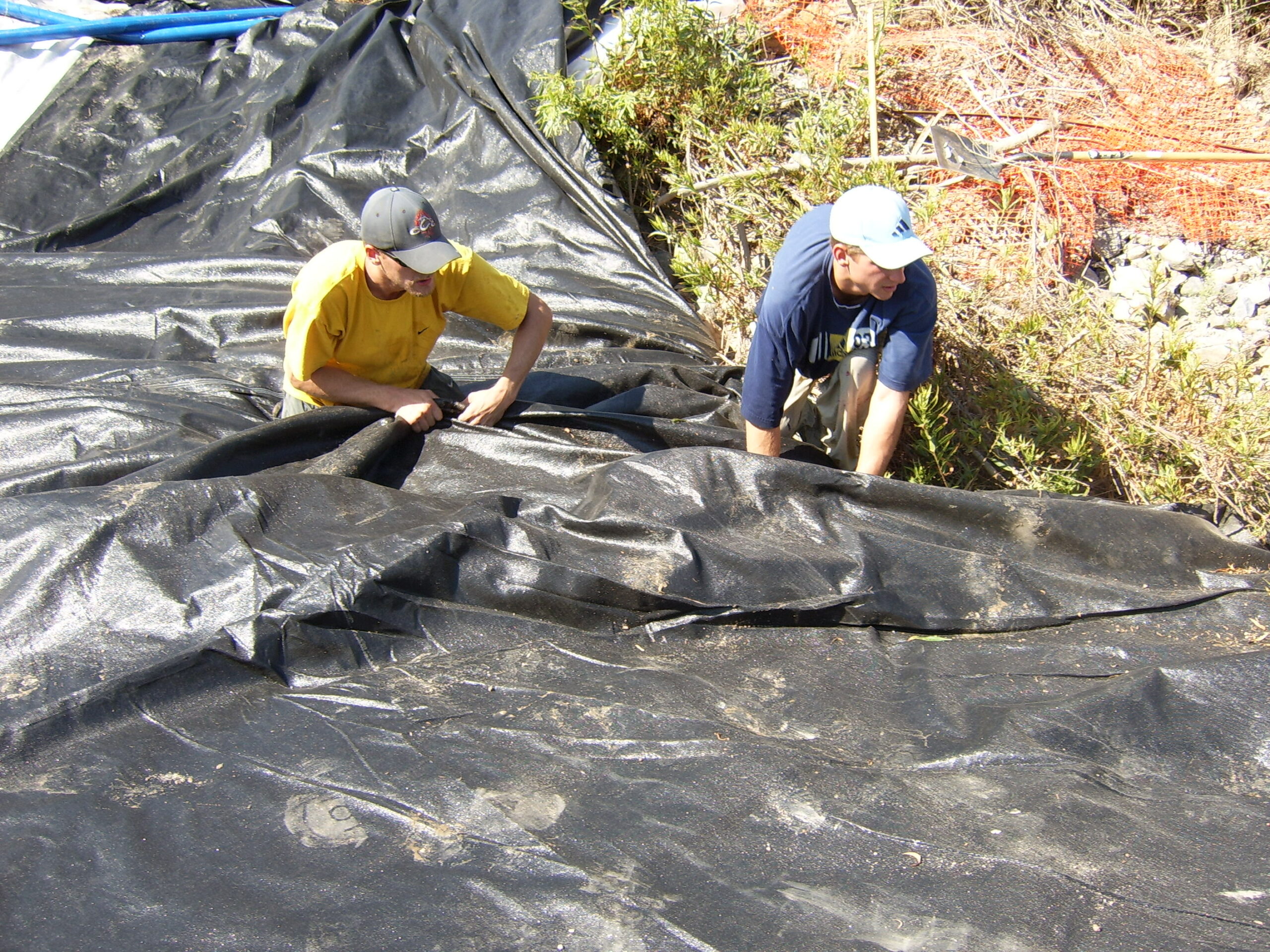
Workers prepare the AquaDam to receive water.
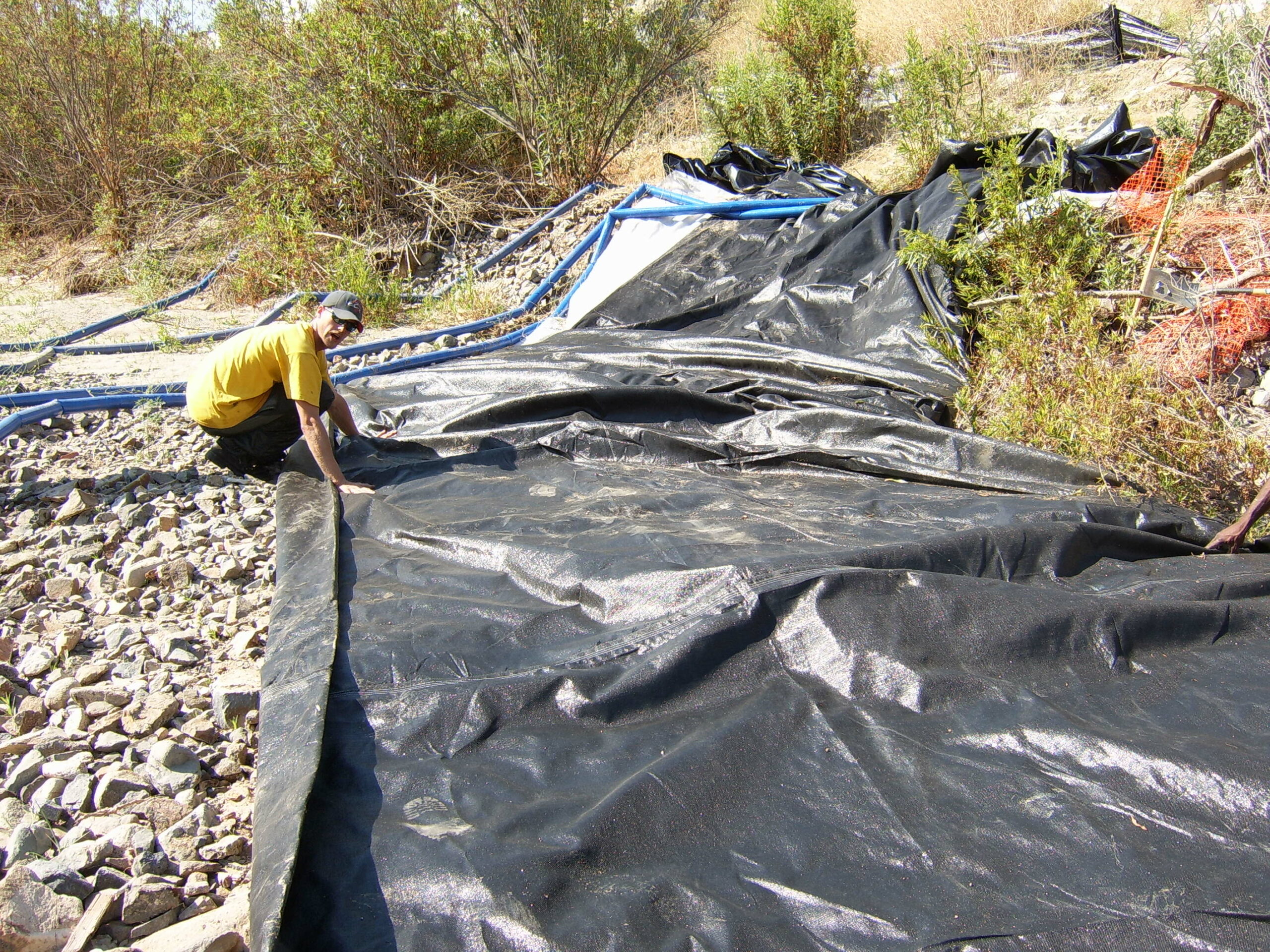
Water is being pumped through the blue hoses and then down into the two fill-tubes at the top. Once inside the fill-tubes, the water will run down the slope and fill the AquaDam.
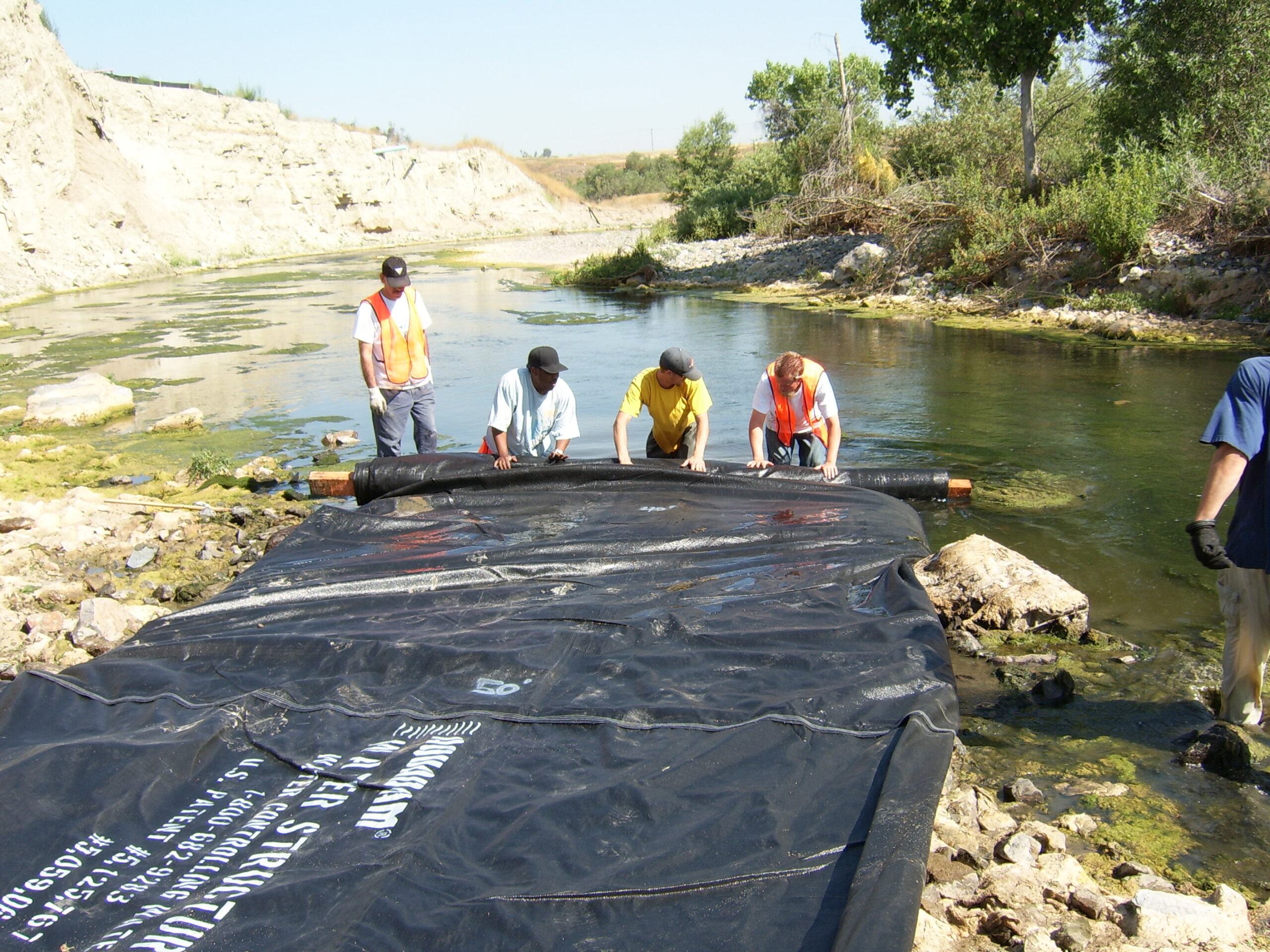
Workers hold the rolled end of the AquaDam, until the body of the AquaDam is taller than the surrounding water.
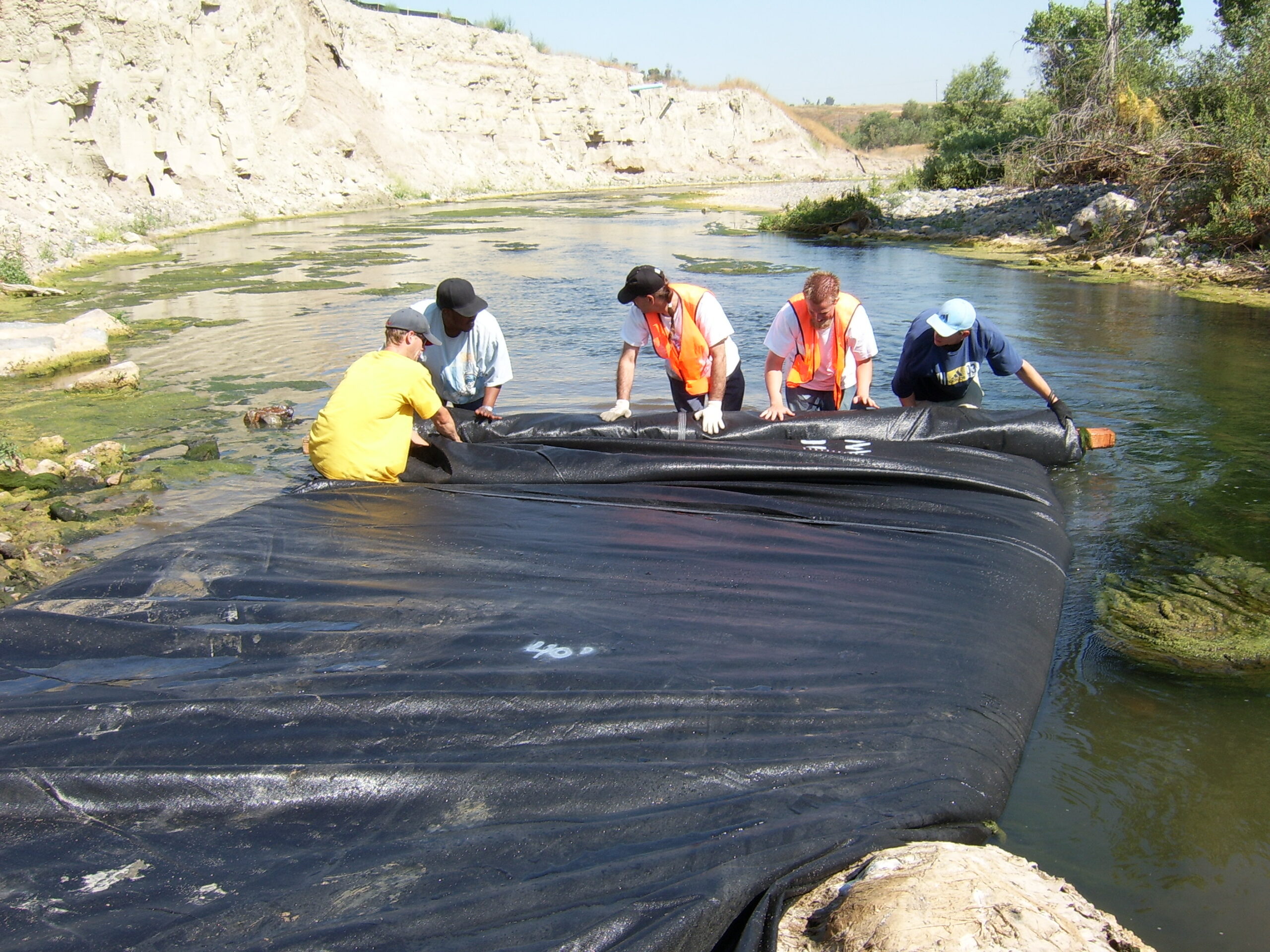
A turn is being made. The left side is being pulled back, the right side is being pulled forward.
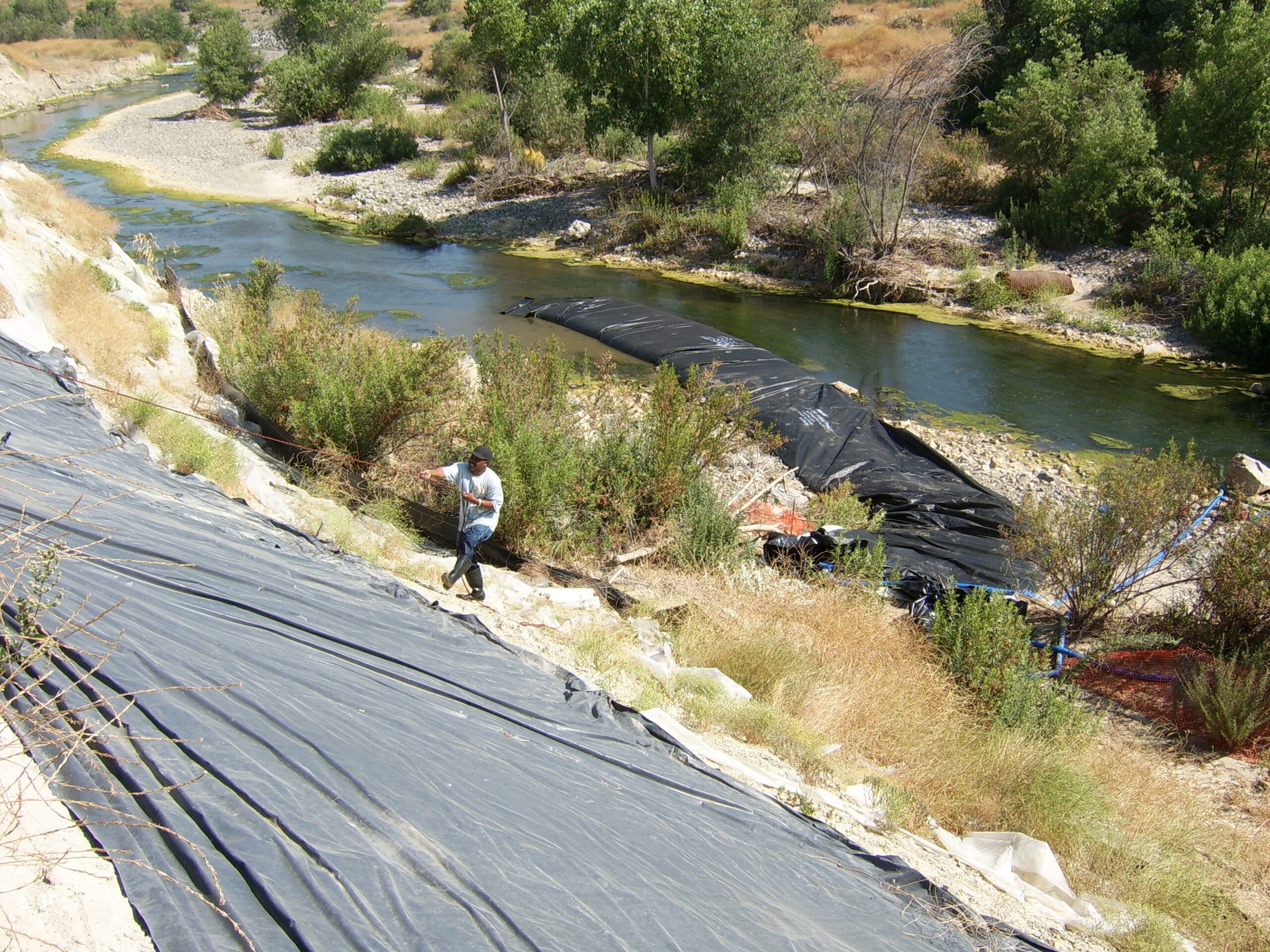
The first AquaDam is rolled out and filling. Now, it is time to roll the next AquaDam down into the water!
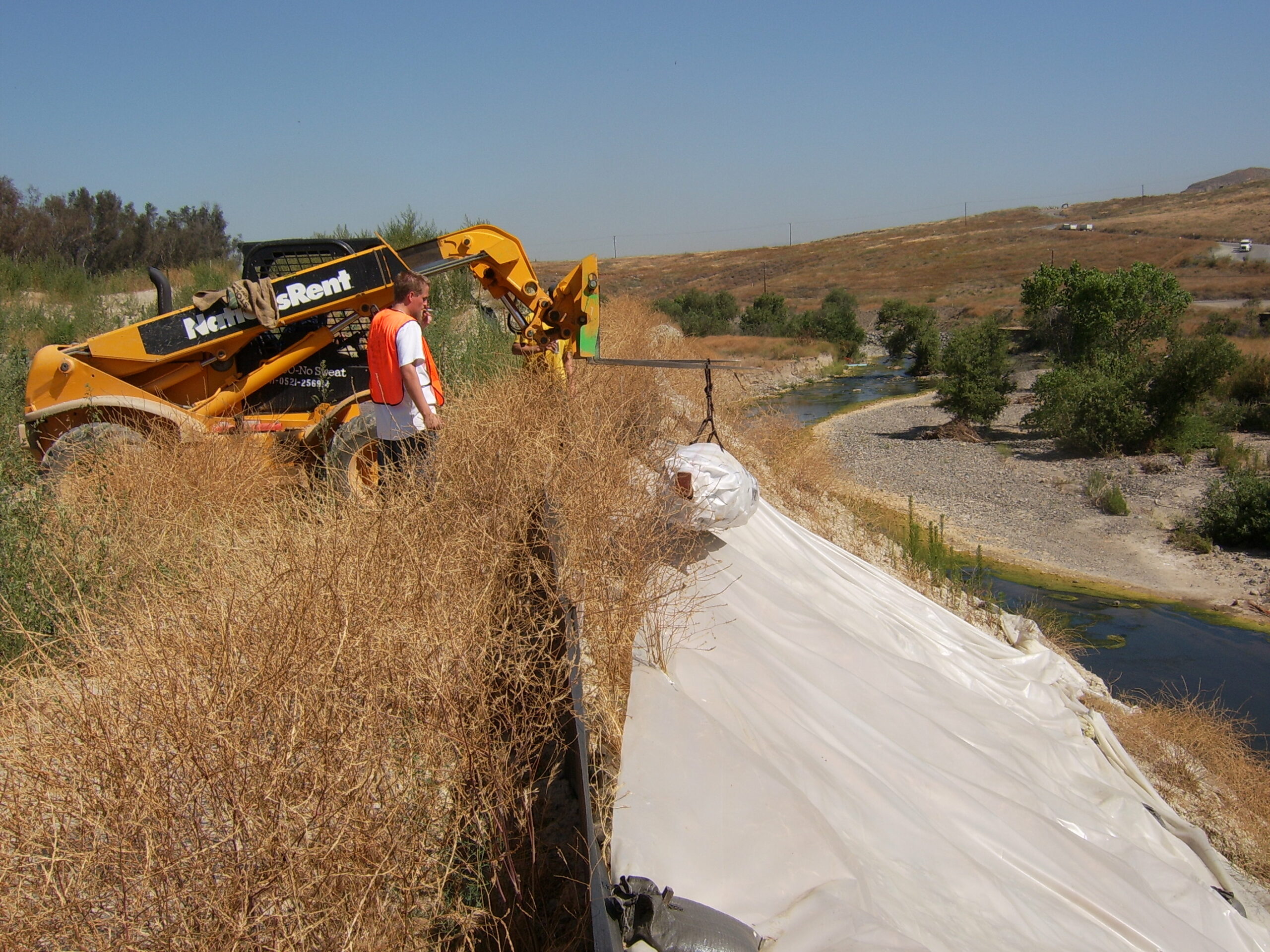
AquaDams are very tough. This one is about to be rolled down the hillside.
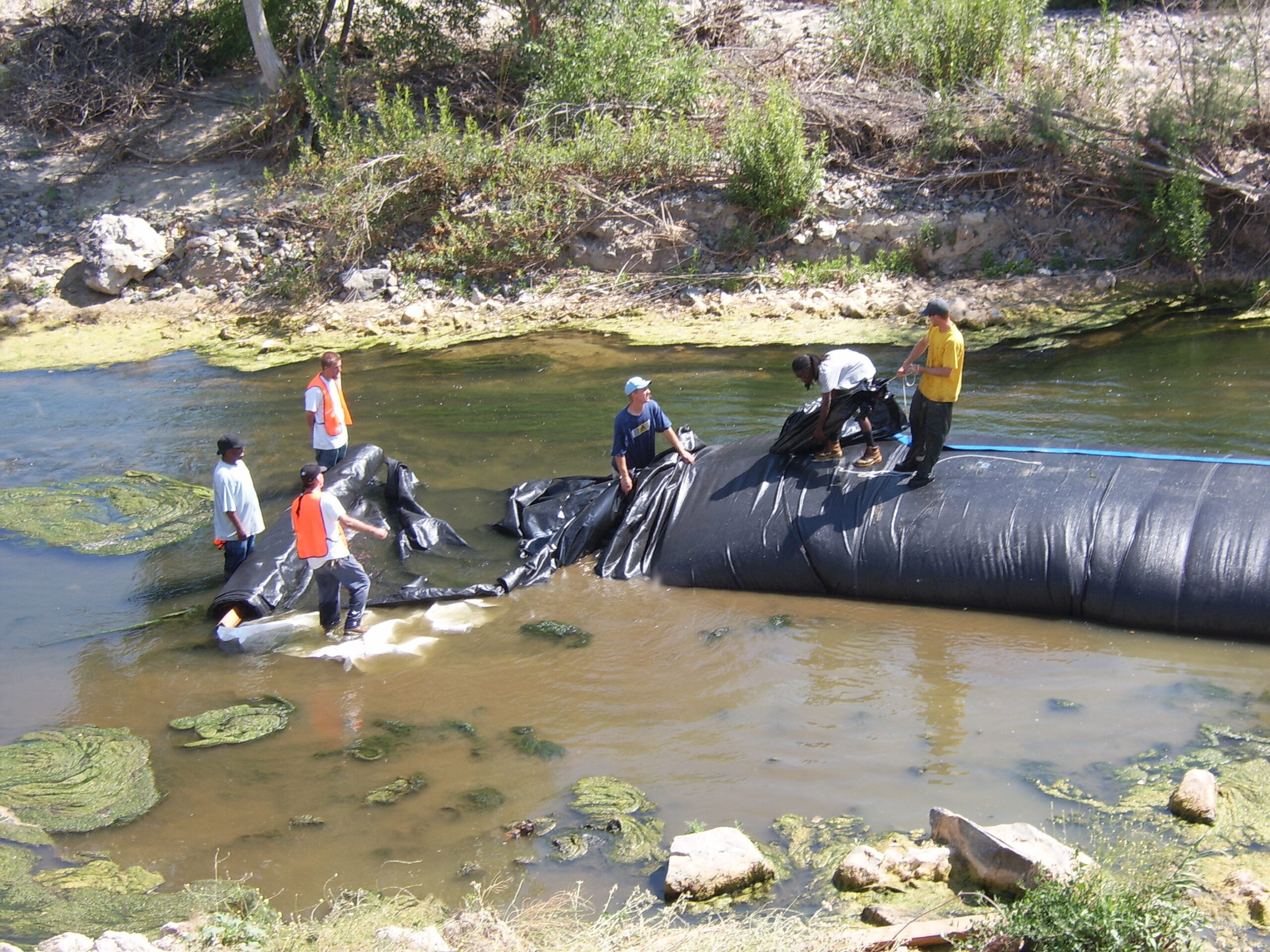
The fill-tubes of the second AquaDam are being pulled through the connection collar attached to the end of the first AquaDam.
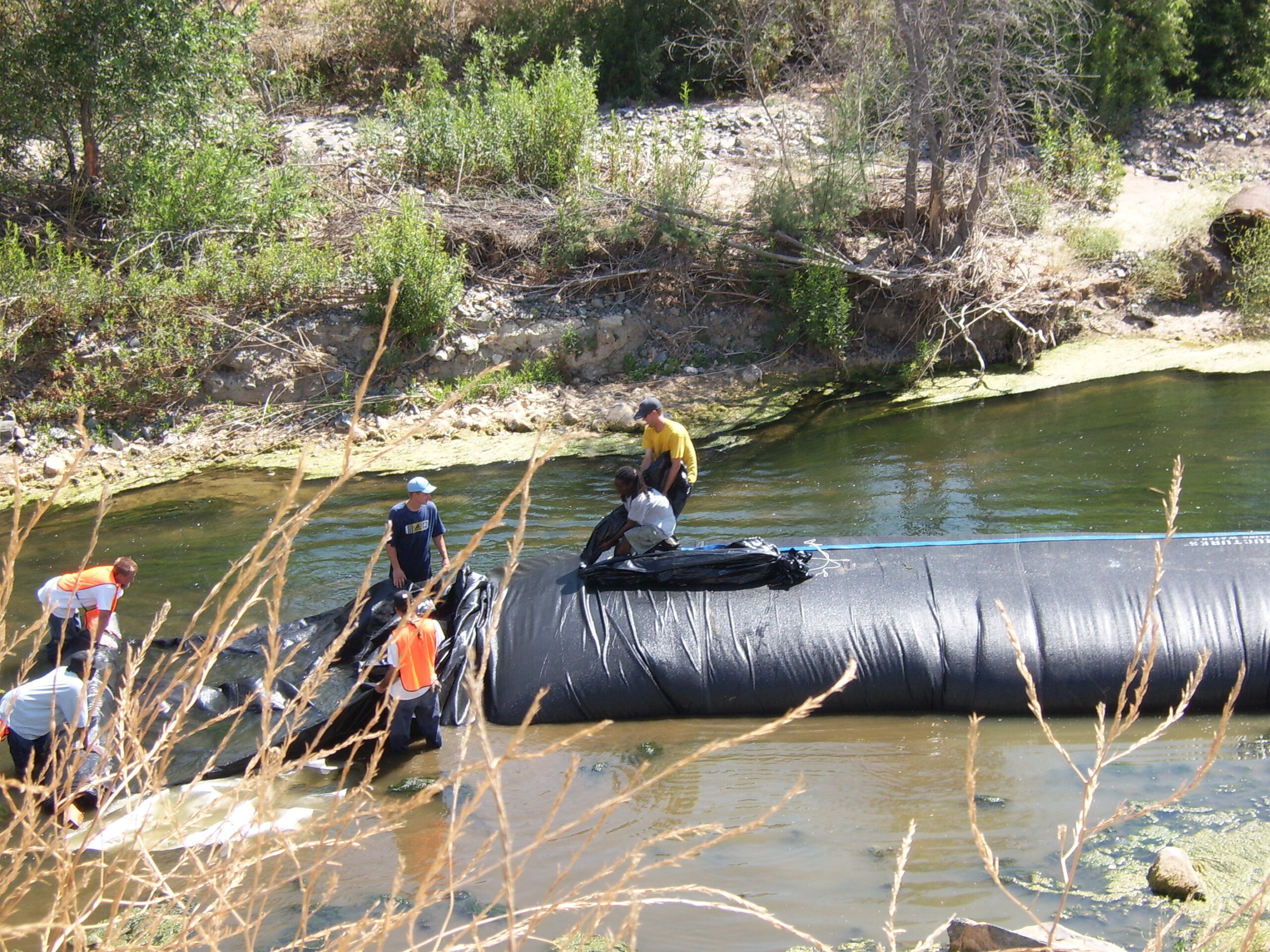
Once the fill-tubes have been pulled all the way through the connection collar, water will be pumped into the fill-tubes of the second AquaDam, which will fill and seal against the first AquaDam.
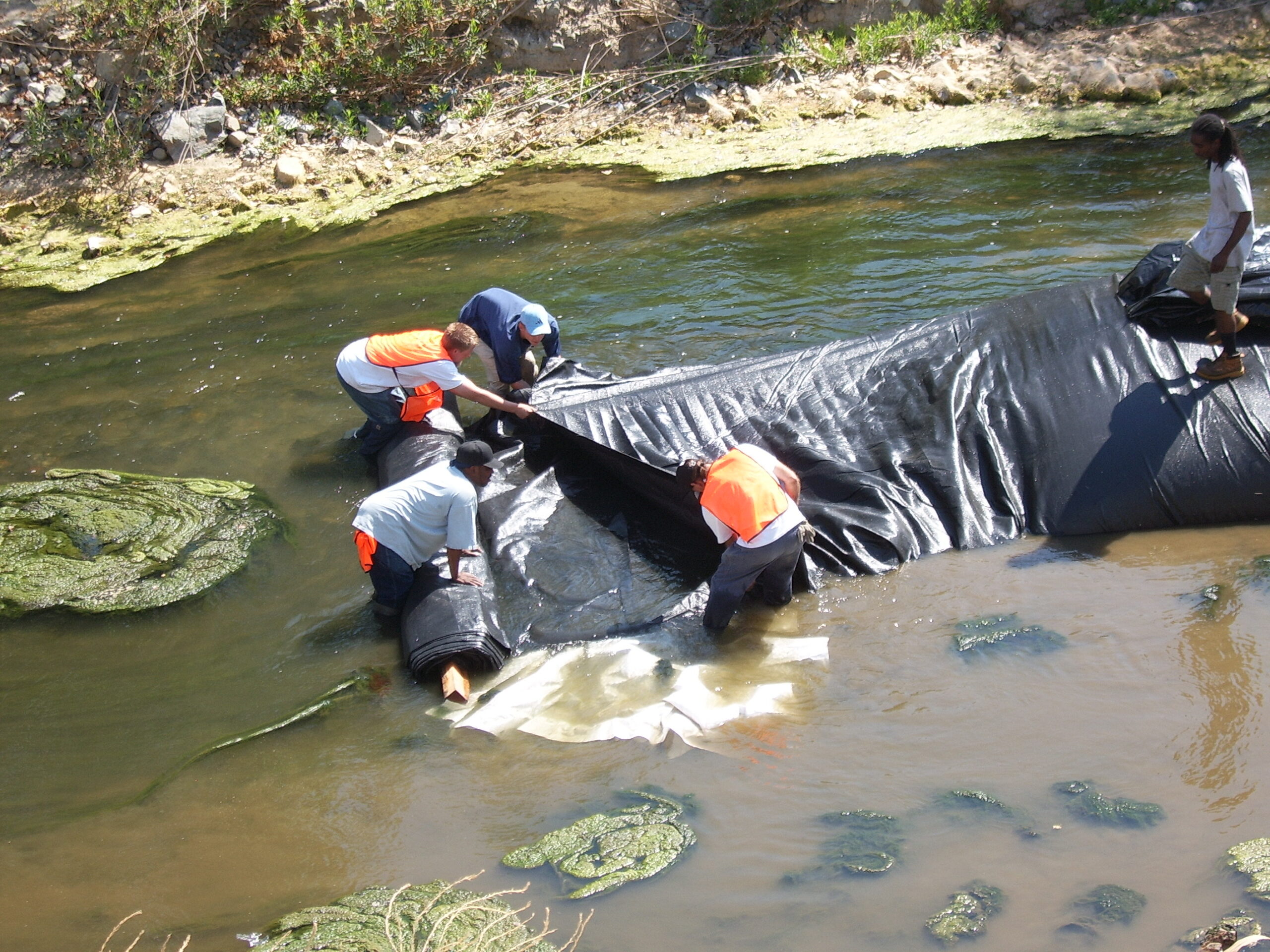
The collar of the first AquaDam is pulled as far out as it can go, to provide maximum contact with the second AquaDam.
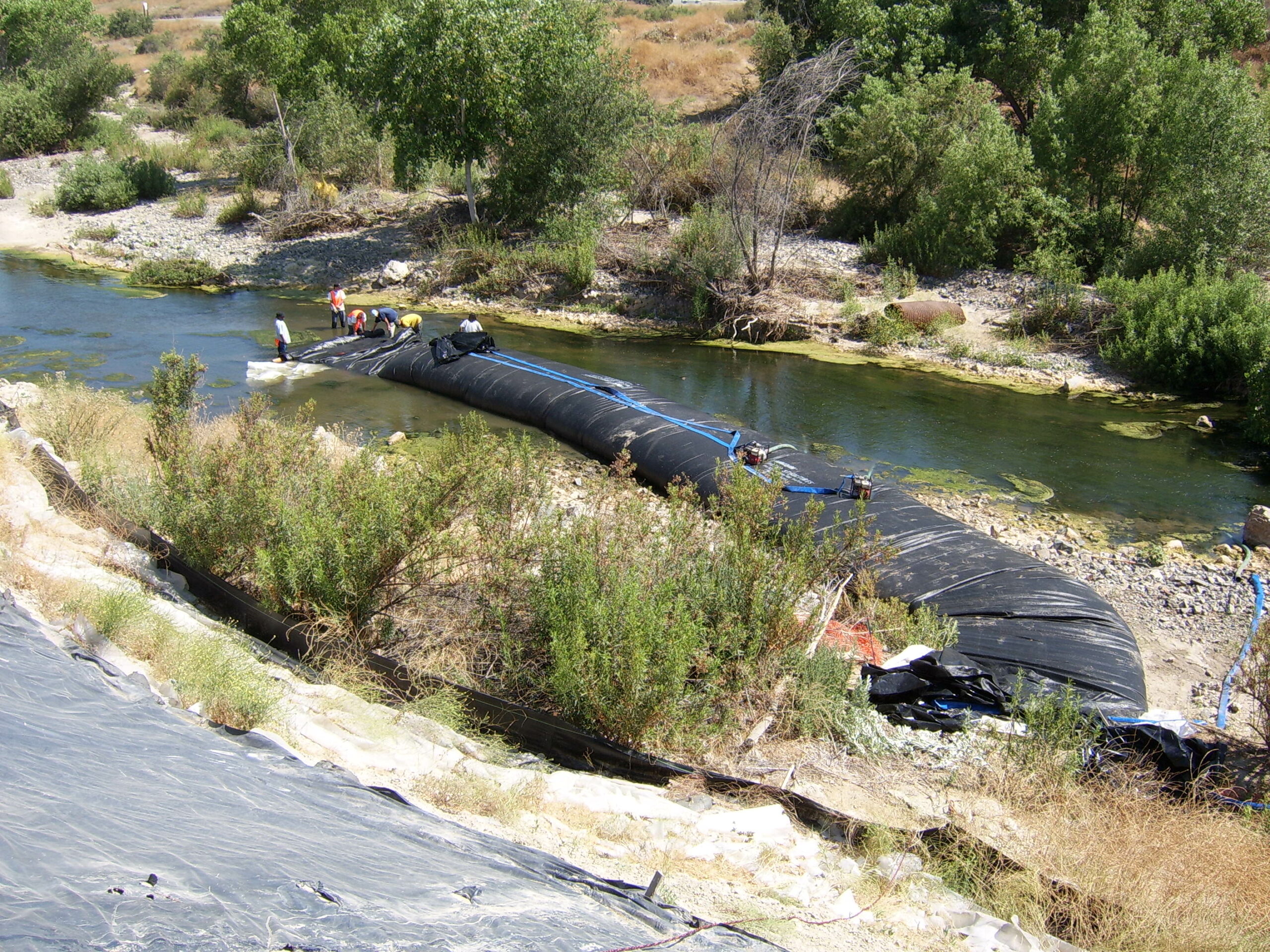
The first AquaDam is now a work platform upon which pumps and other work materials can be set.
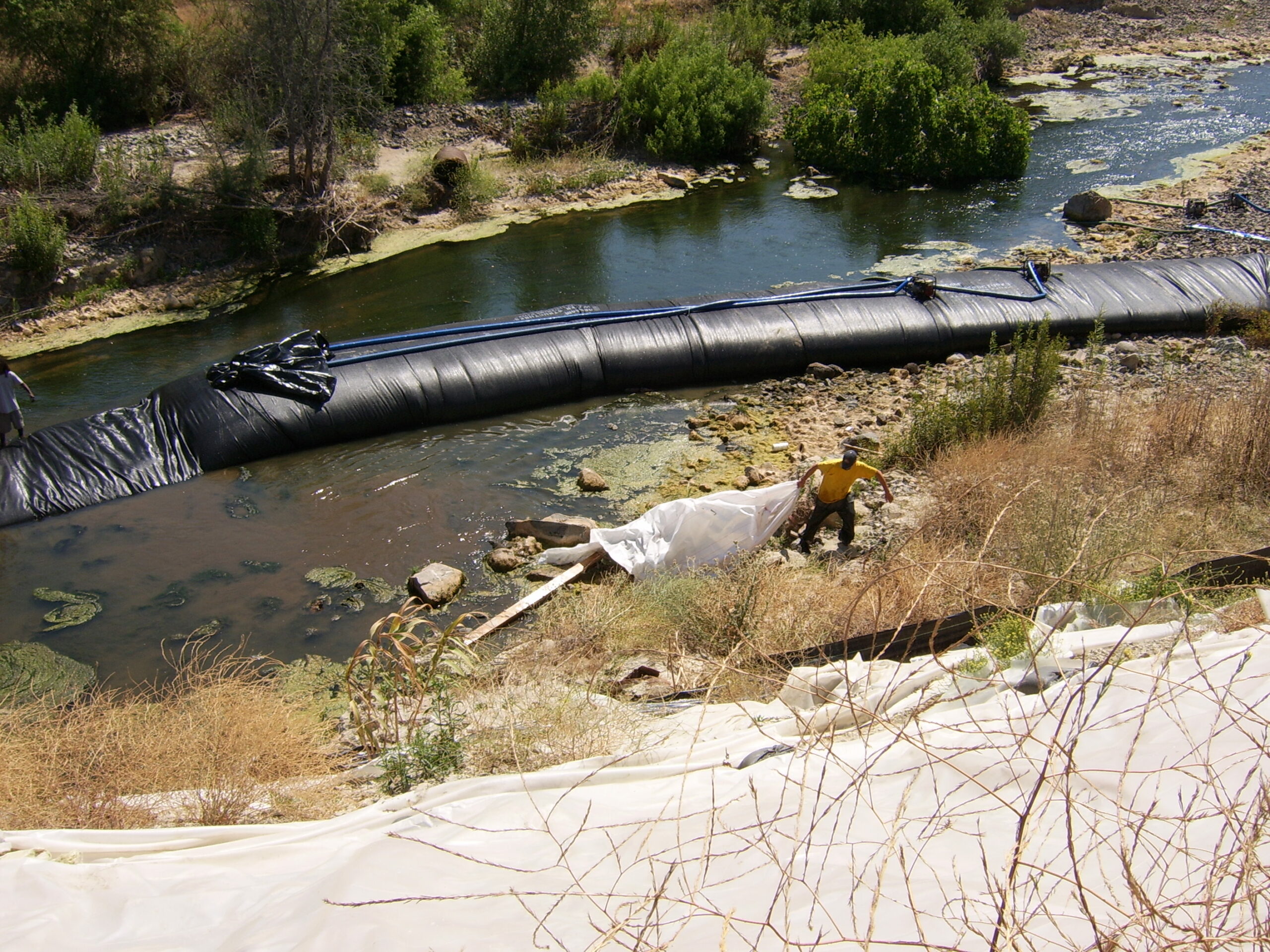
The second AquaDam's protective wrap is being removed from the river, while the second AquaDam is being filled.
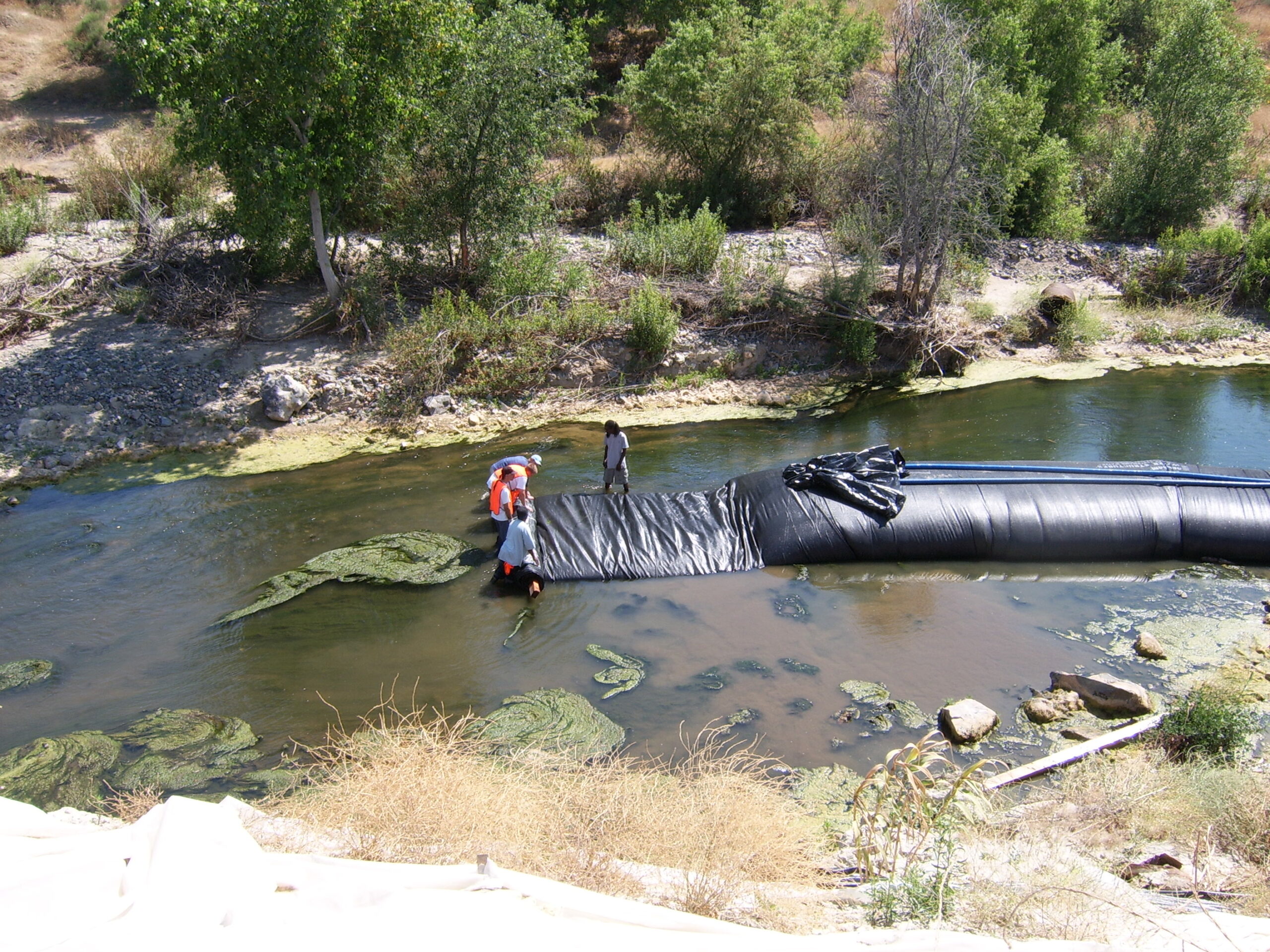
An appropriate amount of head (water contained in the AquaDam above surrounding water level) must be maintained, to hold the AquaDam in place. Otherwise, the AquaDam will be subject to the rivers current.
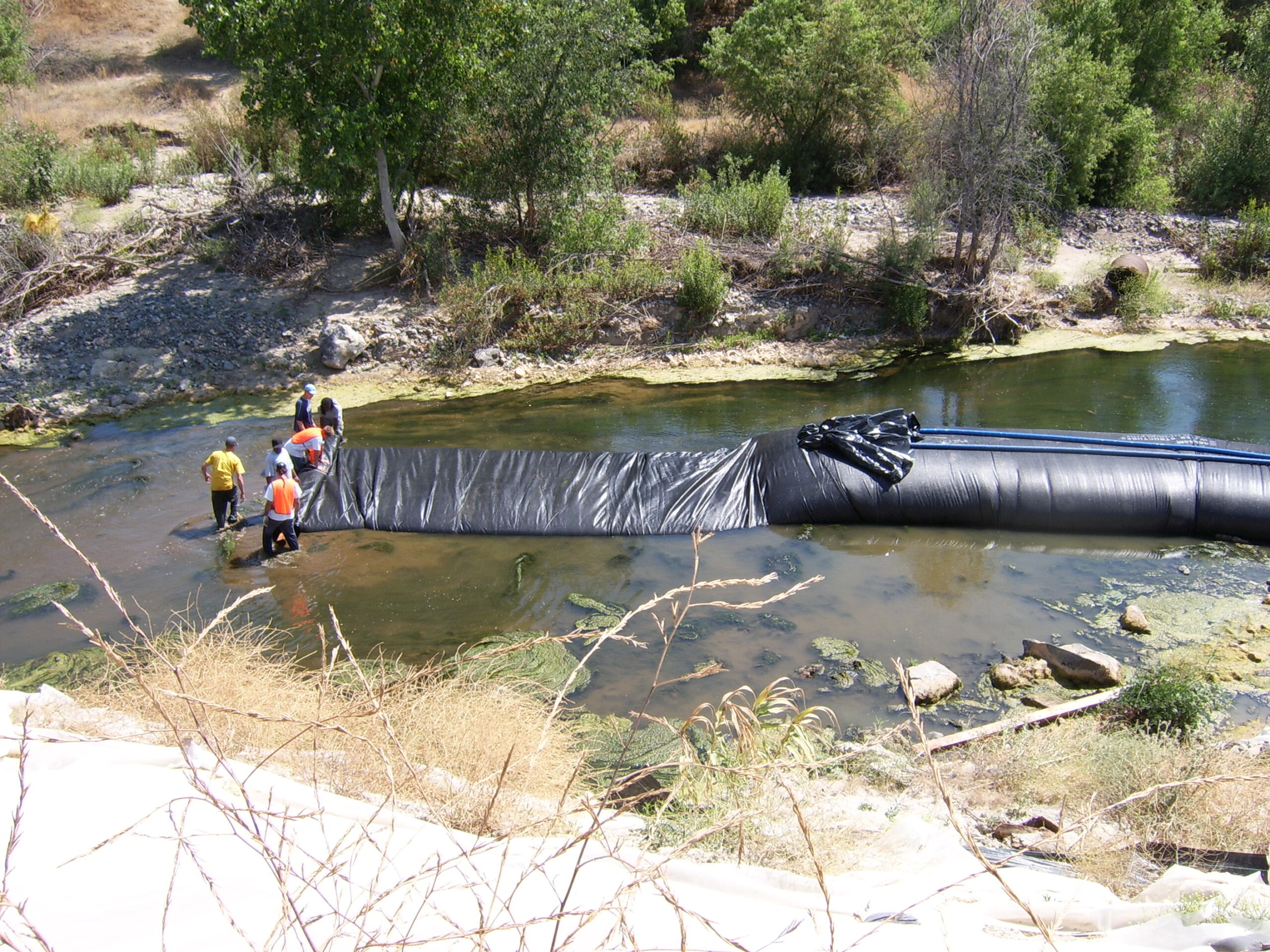
The second AquaDam continues to fill.
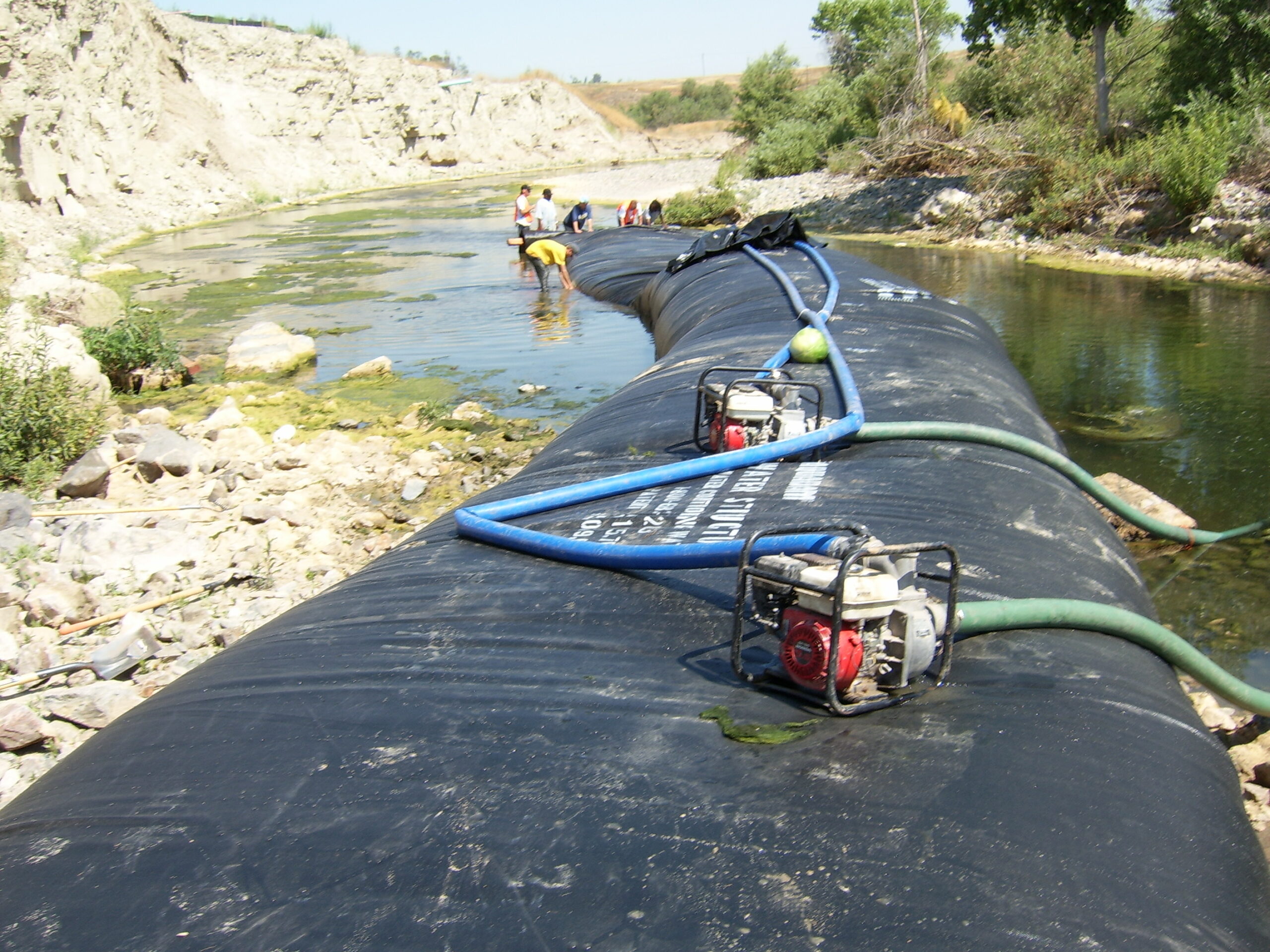
Both of these first two AquaDams are 4ft tall and 100ft long.
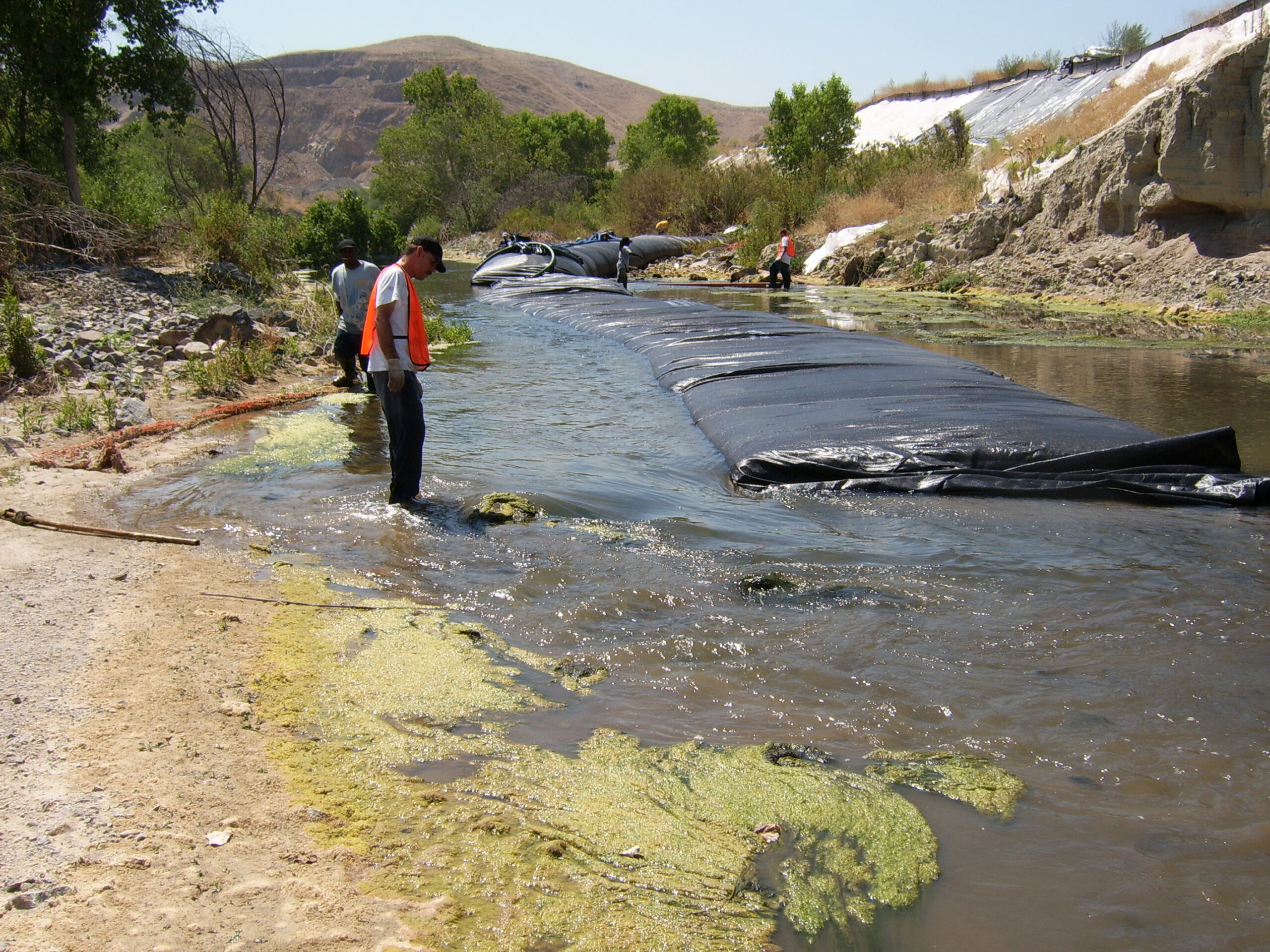
The second AquaDam is fully unrolled and must be left to fill to capacity.
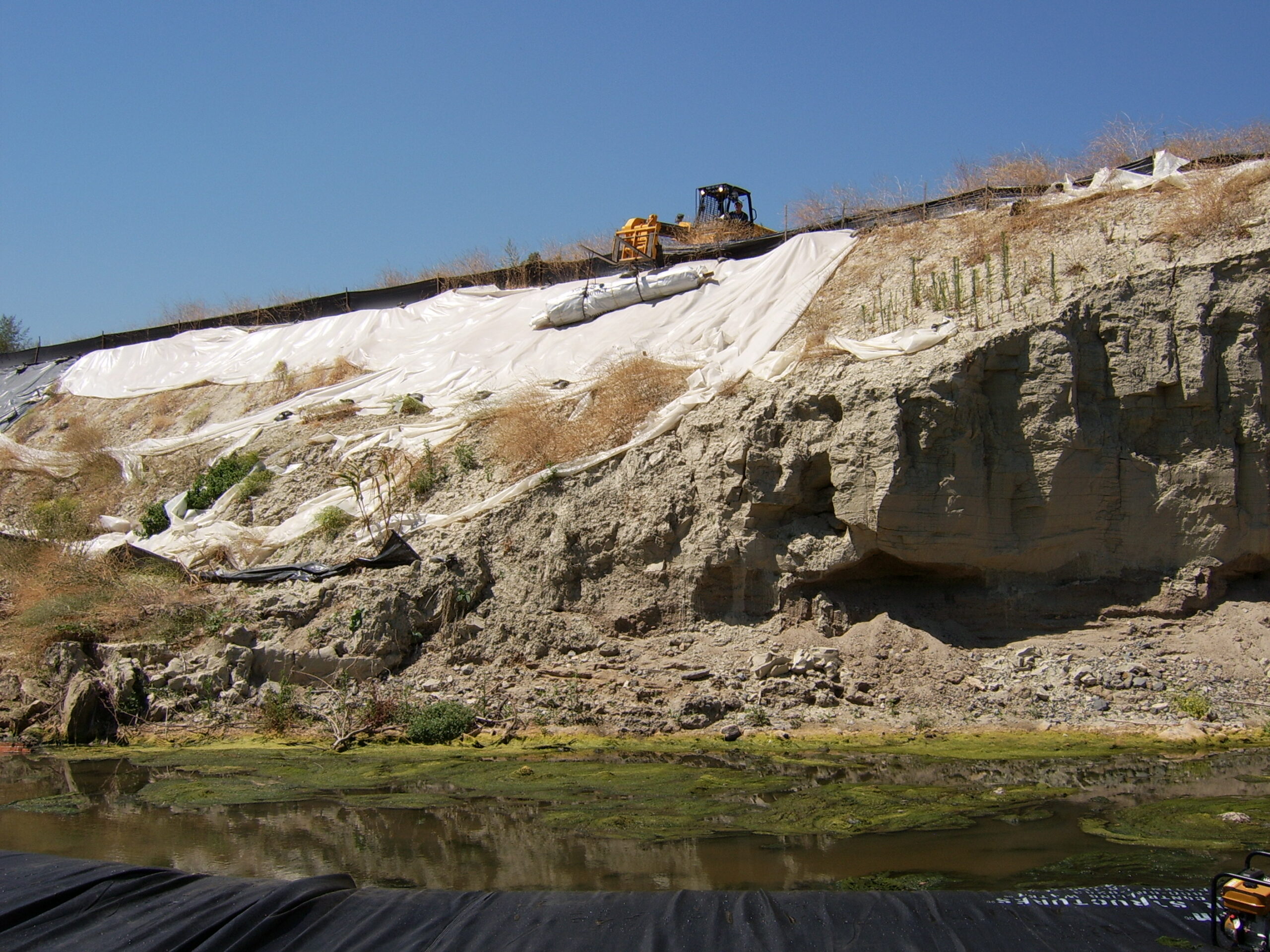
The third 4ft tall by 100ft long AquaDam is being rolled down the hill.
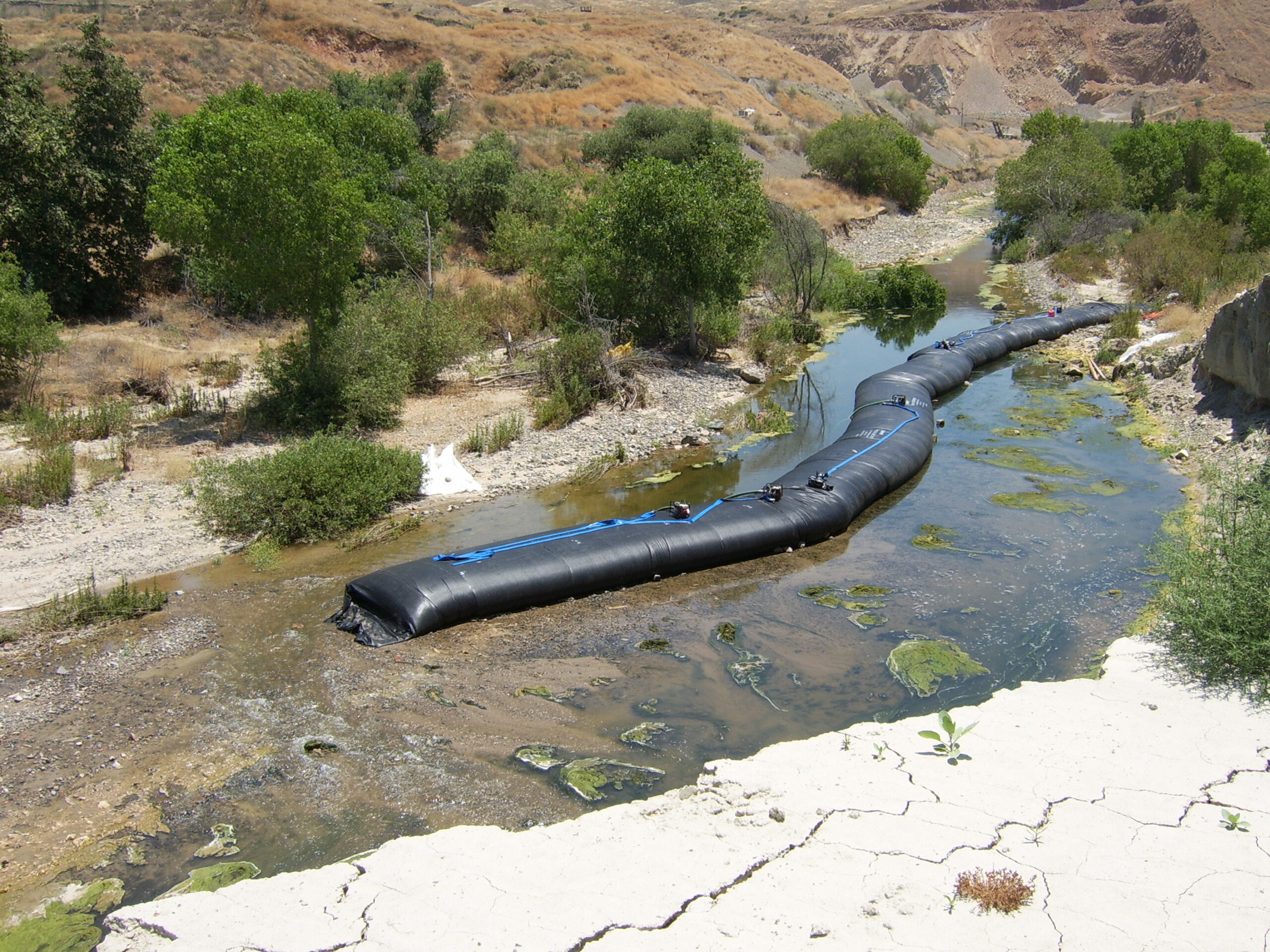
All of the 4ft tall AquaDams have been installed.
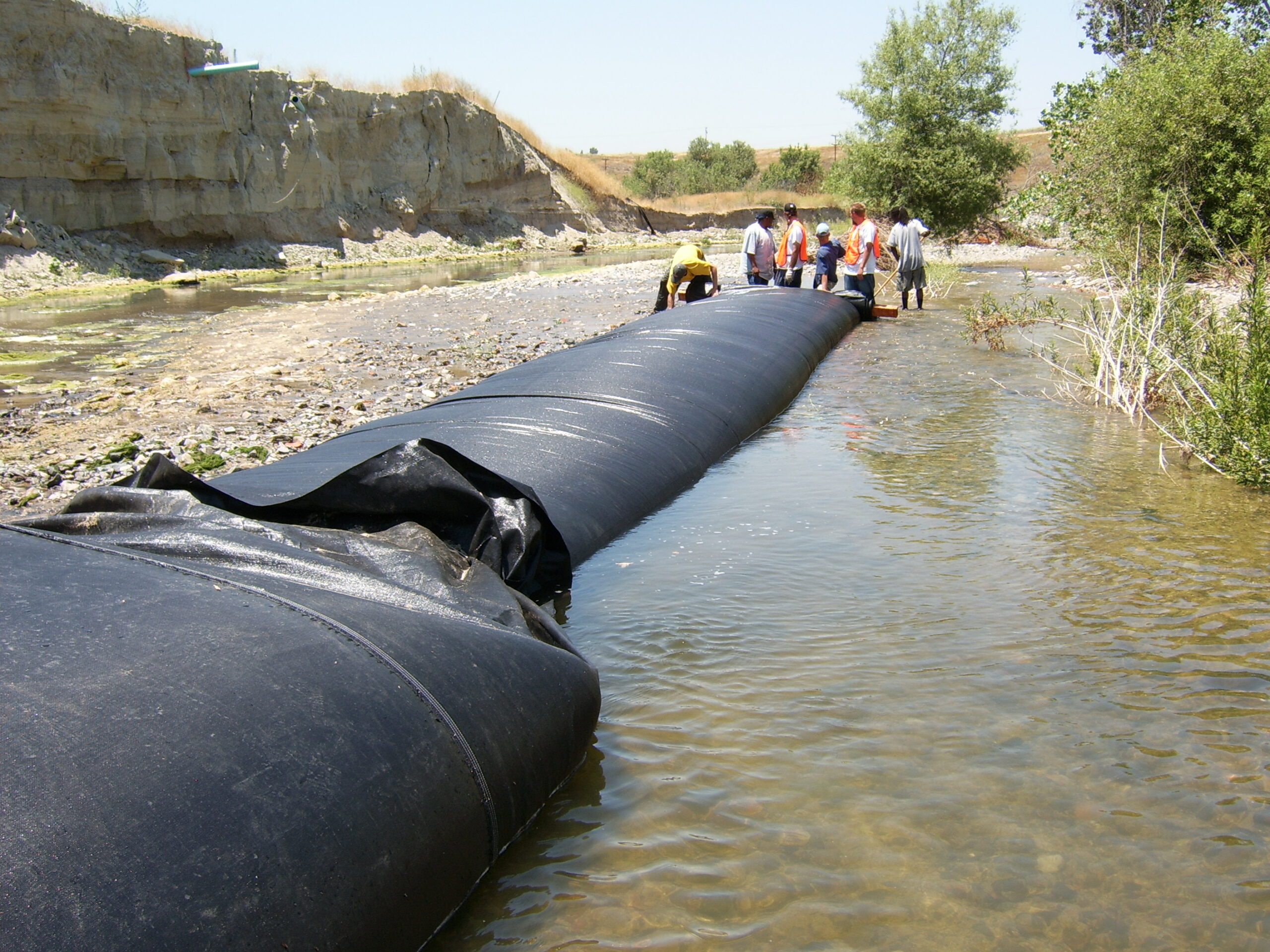
Now a 3ft tall AquaDam is being installed. This smaller fourth AquaDam's fill-tubes have been pulled through the connection collar of the third 4ft tall AquaDam. Taller and shorter AquaDams may be connected together.
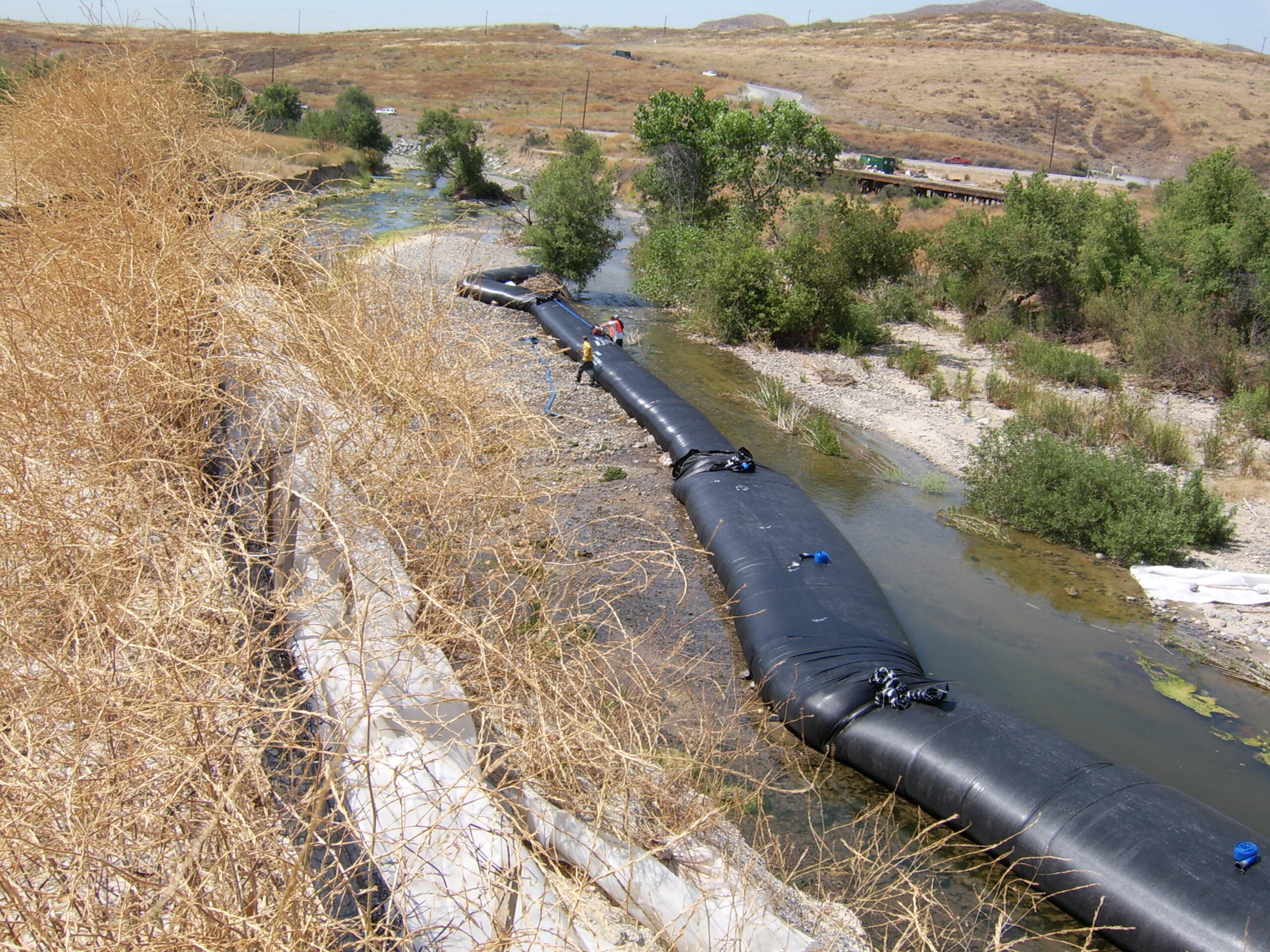
The last two 3ft tall AquaDams have now been installed and are fully filled with water.
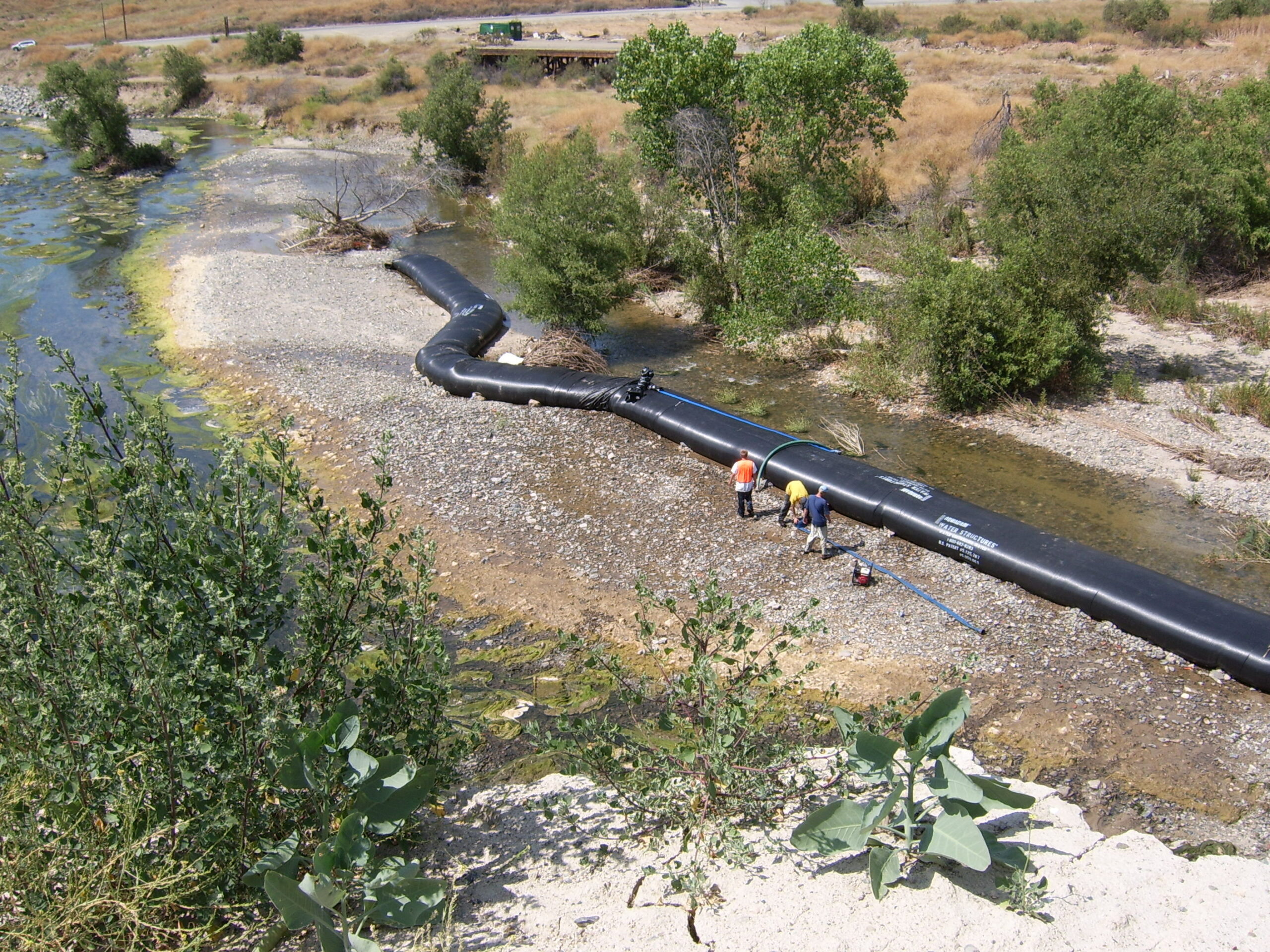
AquaDams are flexible and can be turned around obstructions.
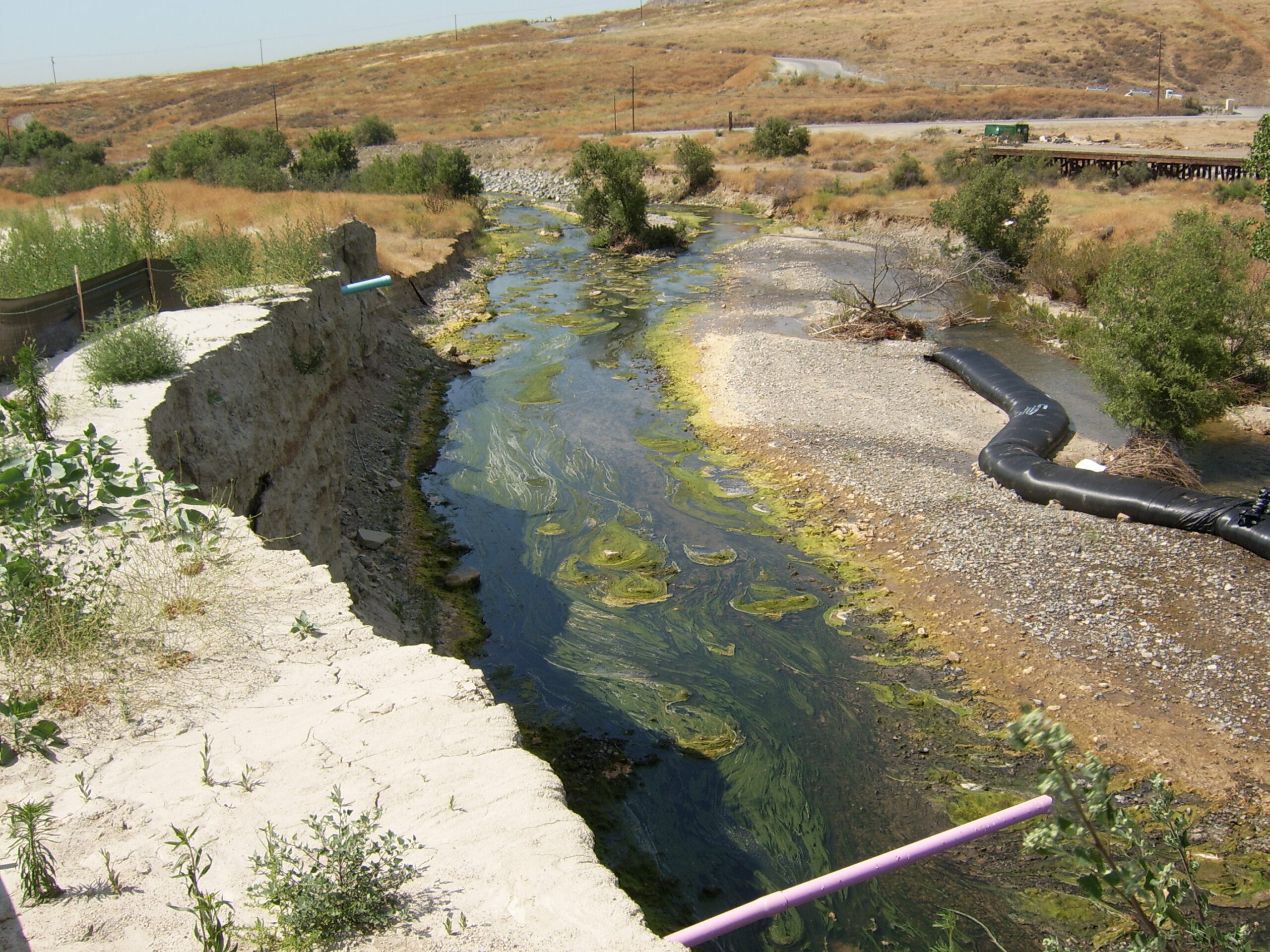
The purpose of these AquaDams is to keep the water away from these sensitive banks. Erosion is a major concern here.
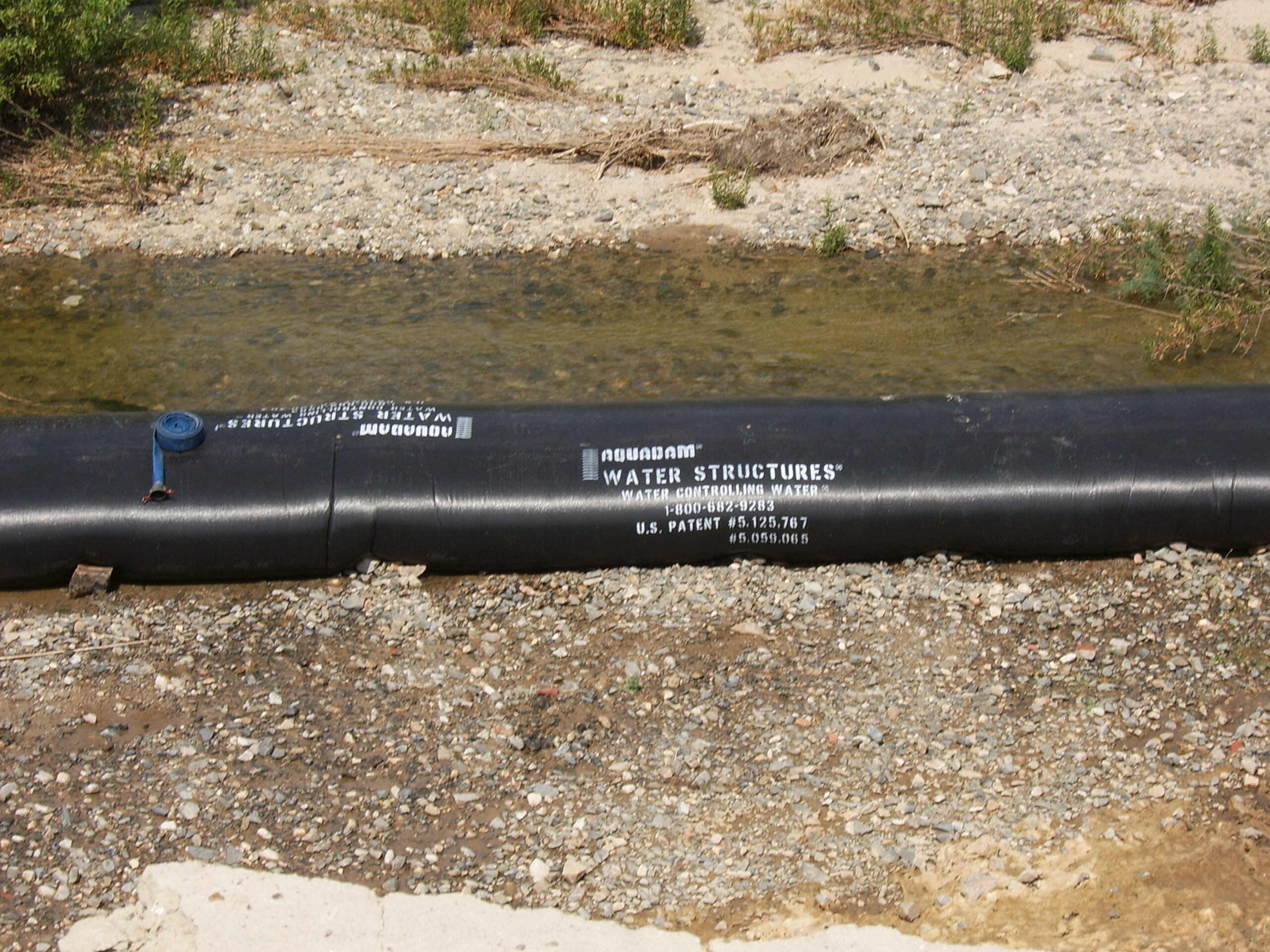
Rock picking may be important to get a better seal under the AquaDam, prior to installation. Placing the non-sharp picked rocks on the (inner perimeter) work area side can help support the AquaDam.
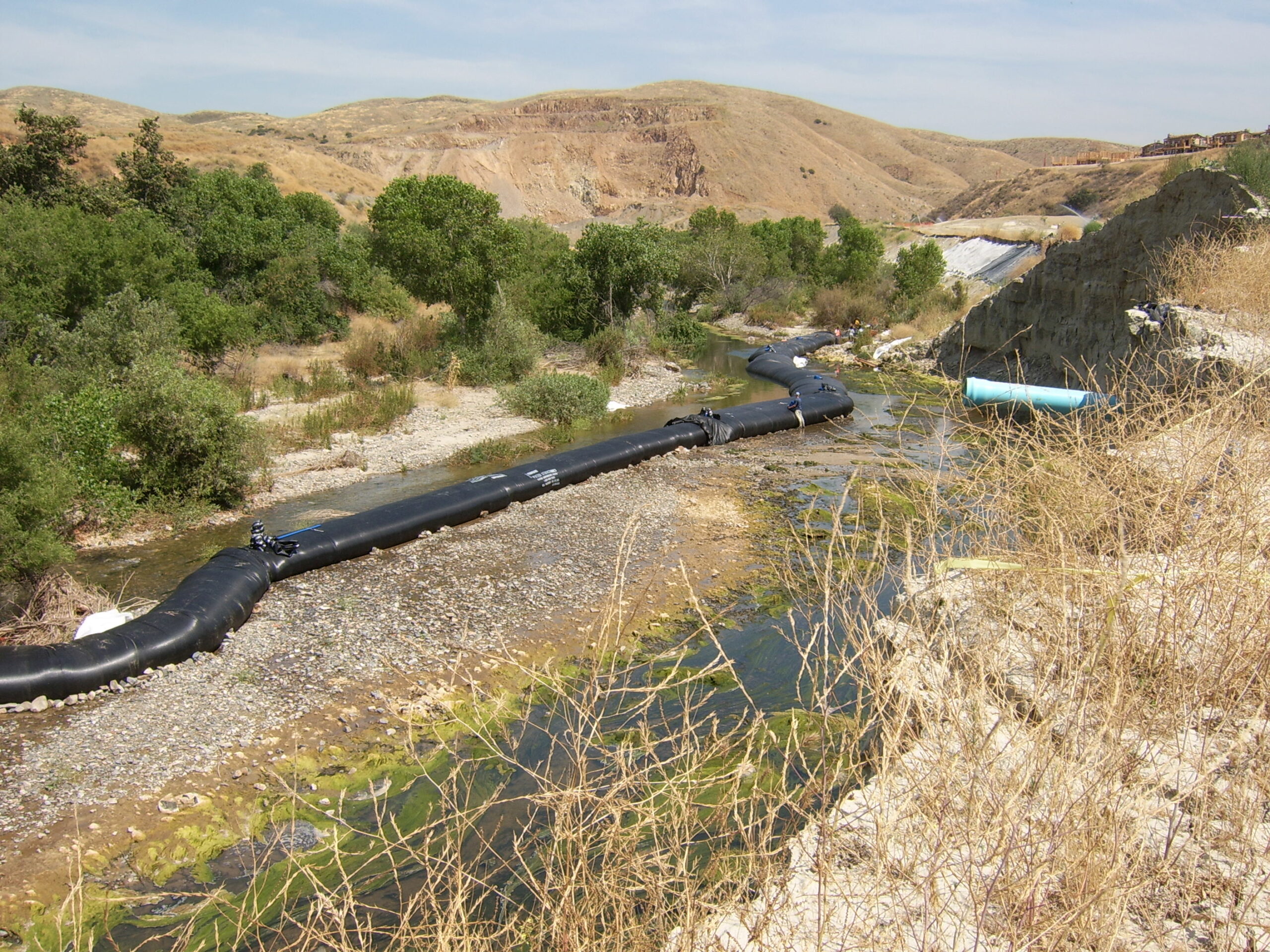
Looking upstream we can see the AquaDam cofferdam system is diverting a majority of river's water.
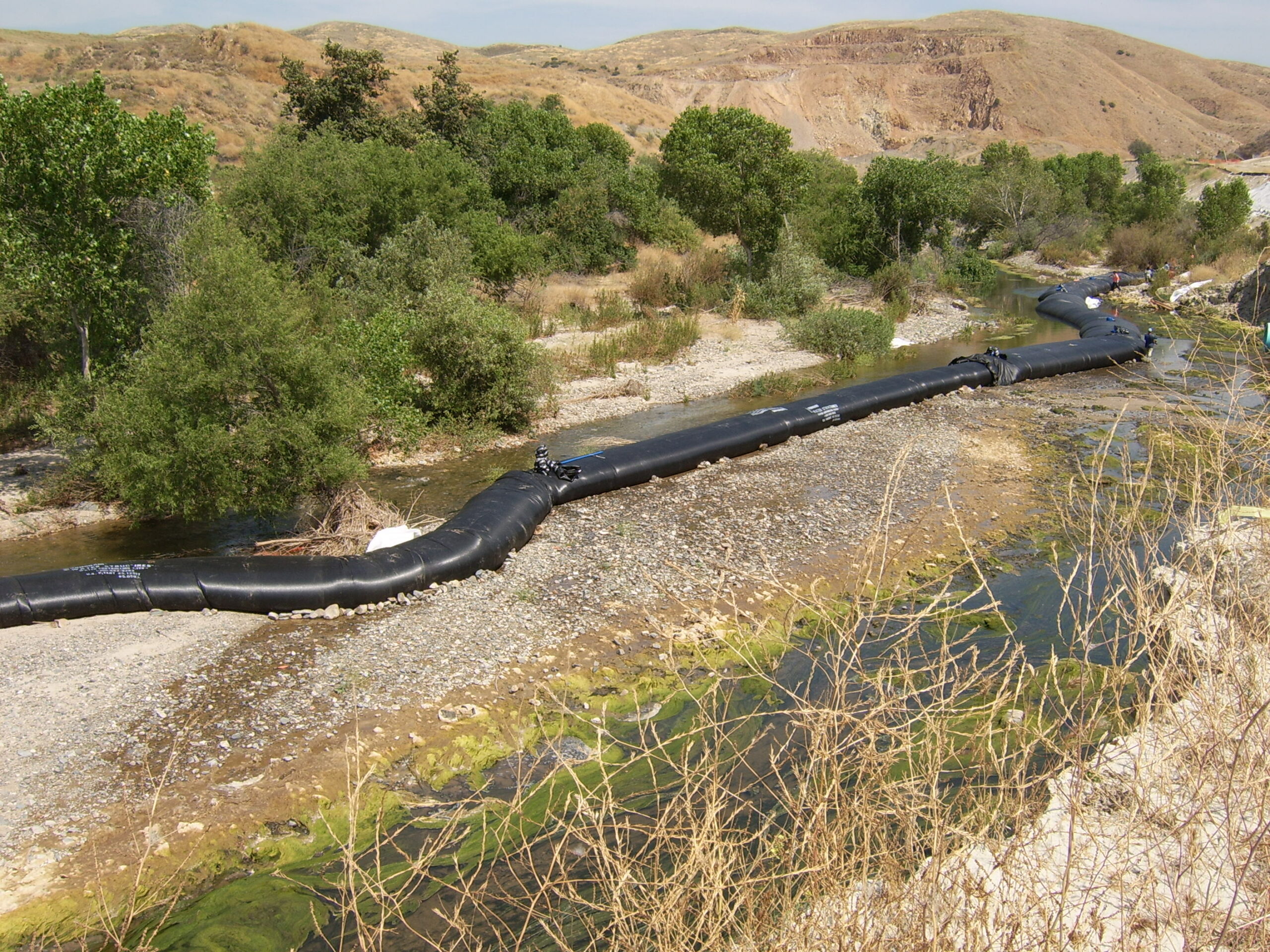
Now that a majority of the flow has been diverted, the water remaining in the work area has to drain.
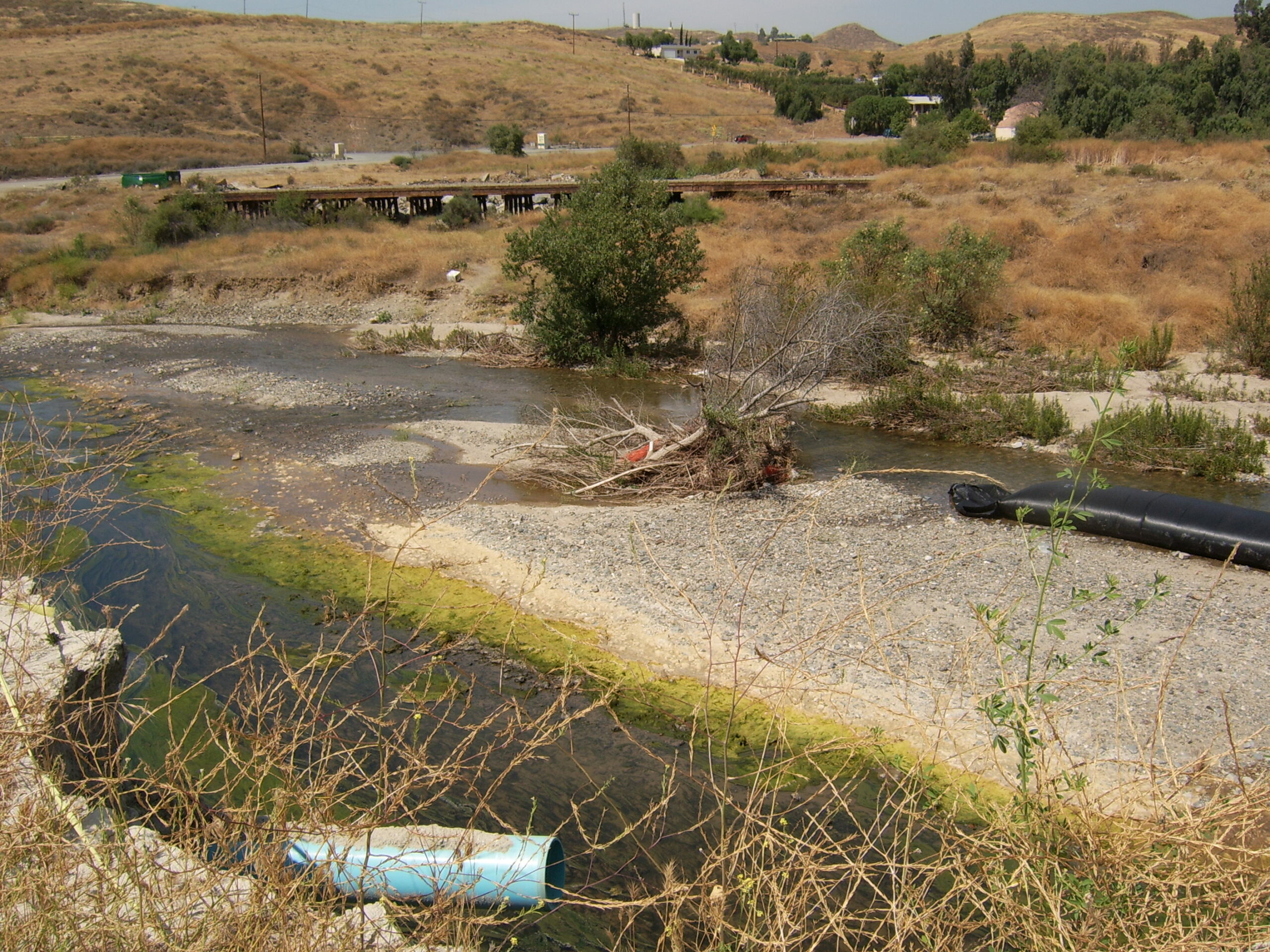
Here is a photo looking downstream of the AquaDam cofferdam system as it is diverting the majority of the river's flow.
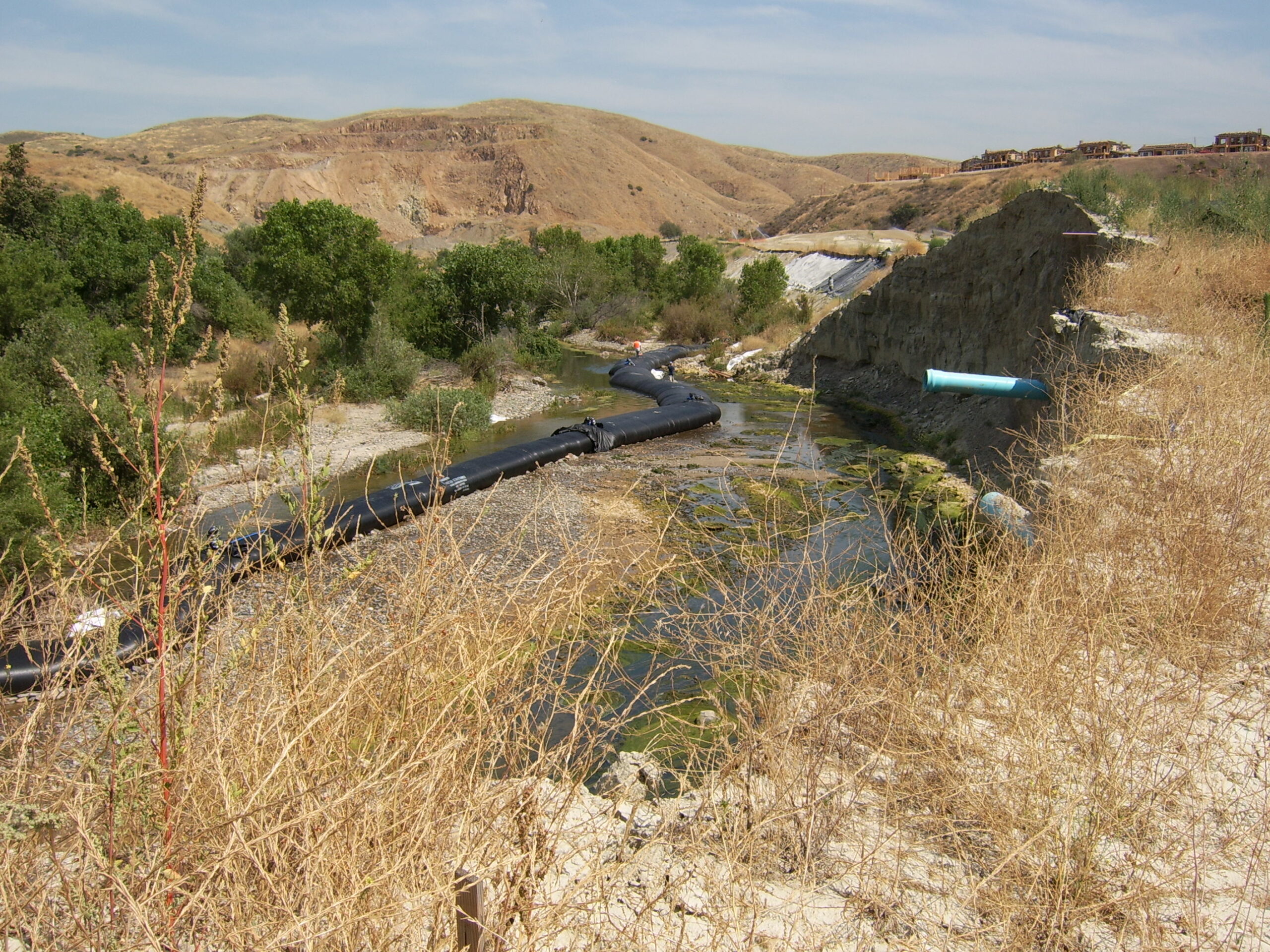
Some of the bank erosion needing repairs can be seen on the upper right side of the this photo.

The AquaDam cofferdam system from the tail end, looking upstream.
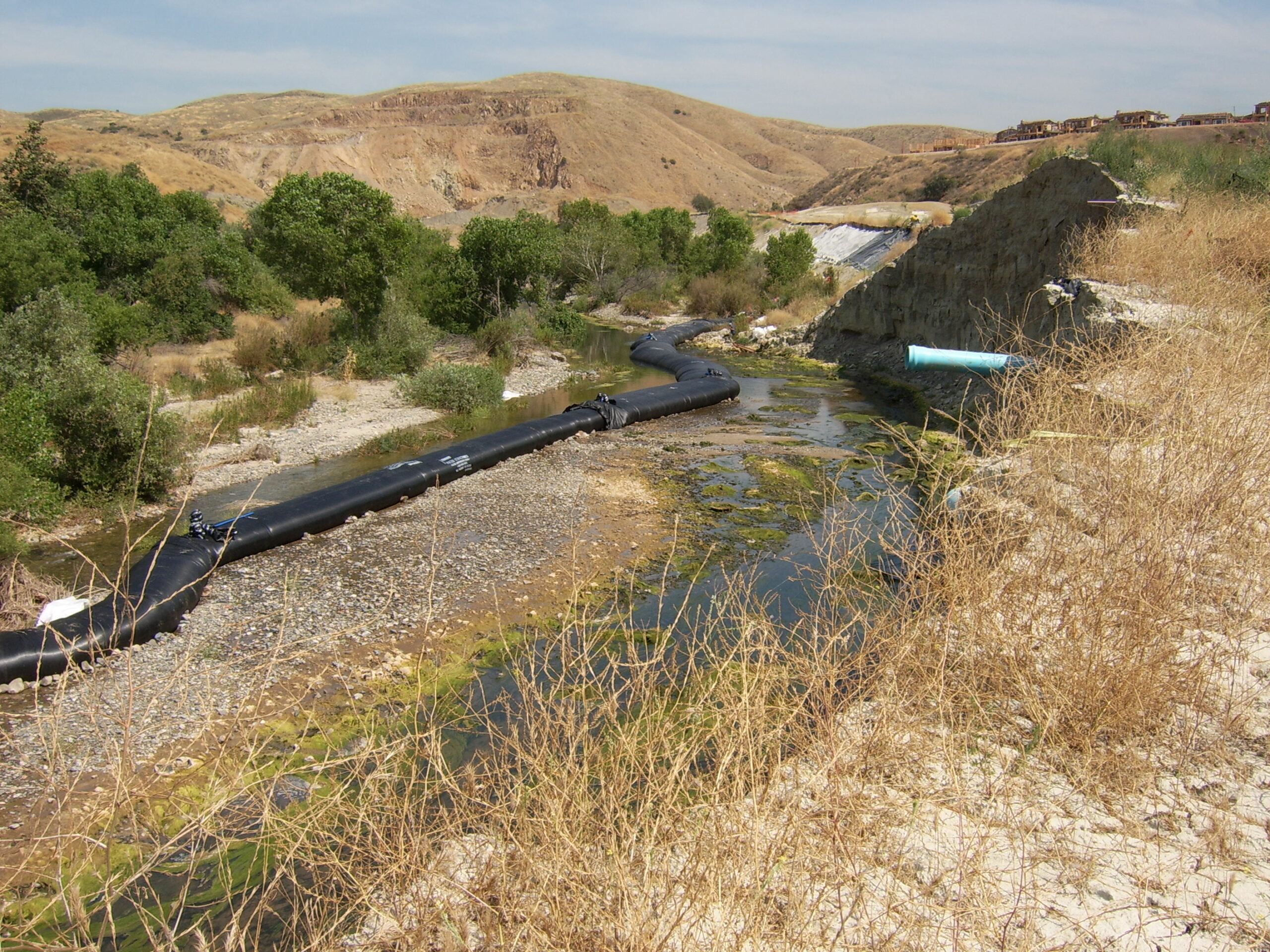
We can see four of the five fill-tubes for the five AquaDams use in this cofferdam system.
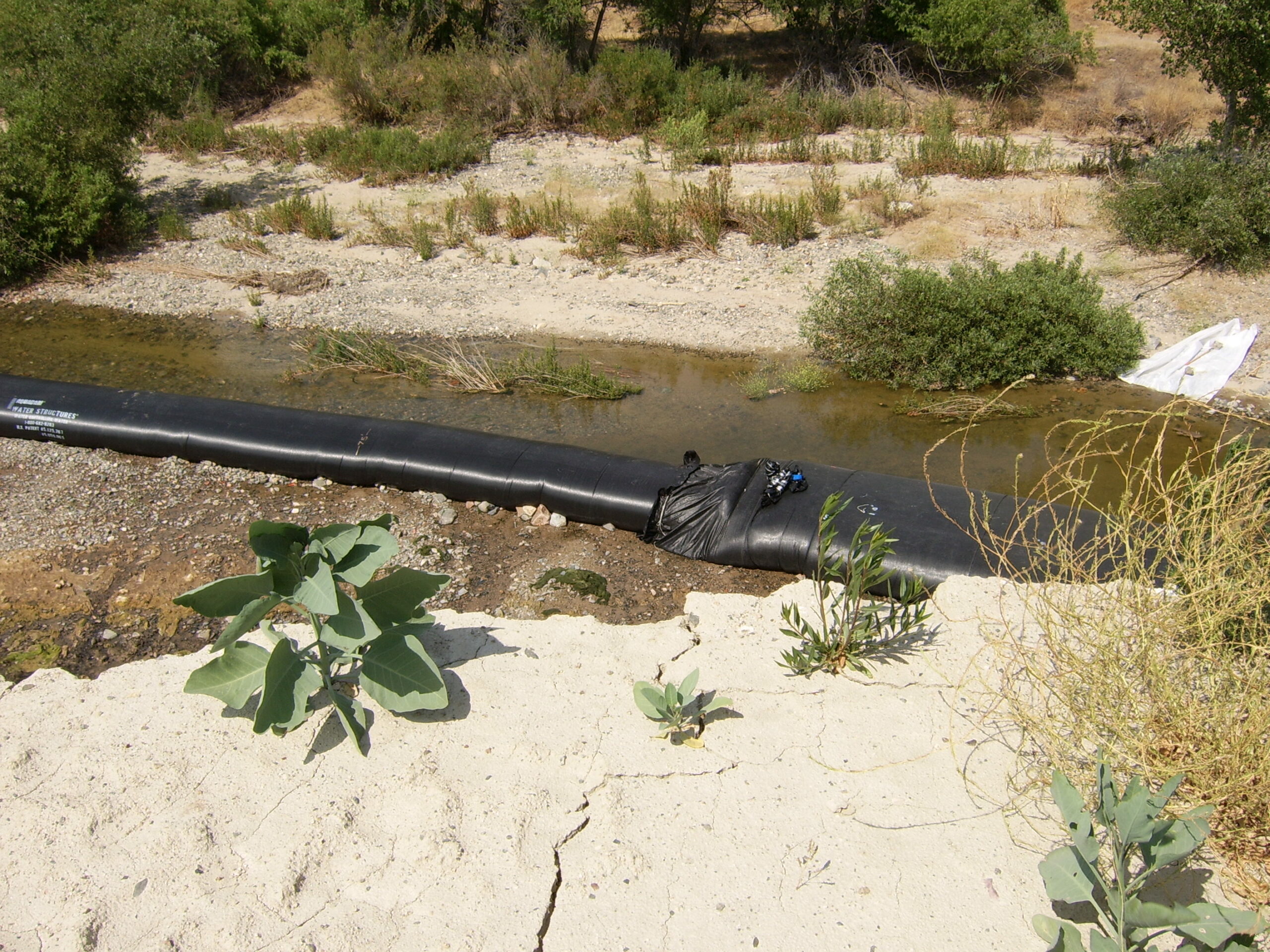
Here is a great connection between two different height AquaDams. One is a 4ft tall (on right) and the other a 3ft tall (on left) AquaDam. The two AquaDams are connected together with a connection collar.
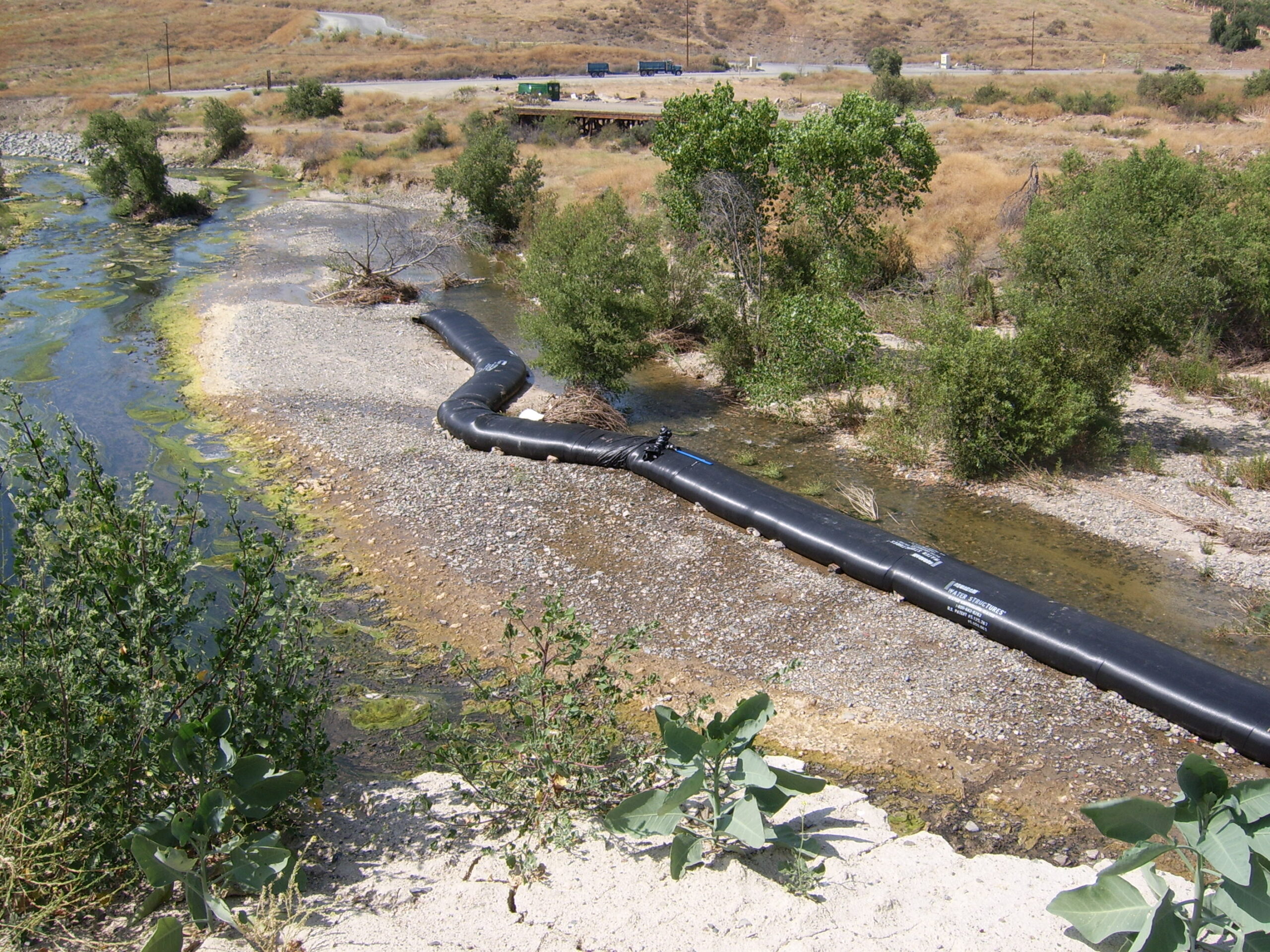
With this AquaDam cofferdam system in place, a major of the flow has been diverted.
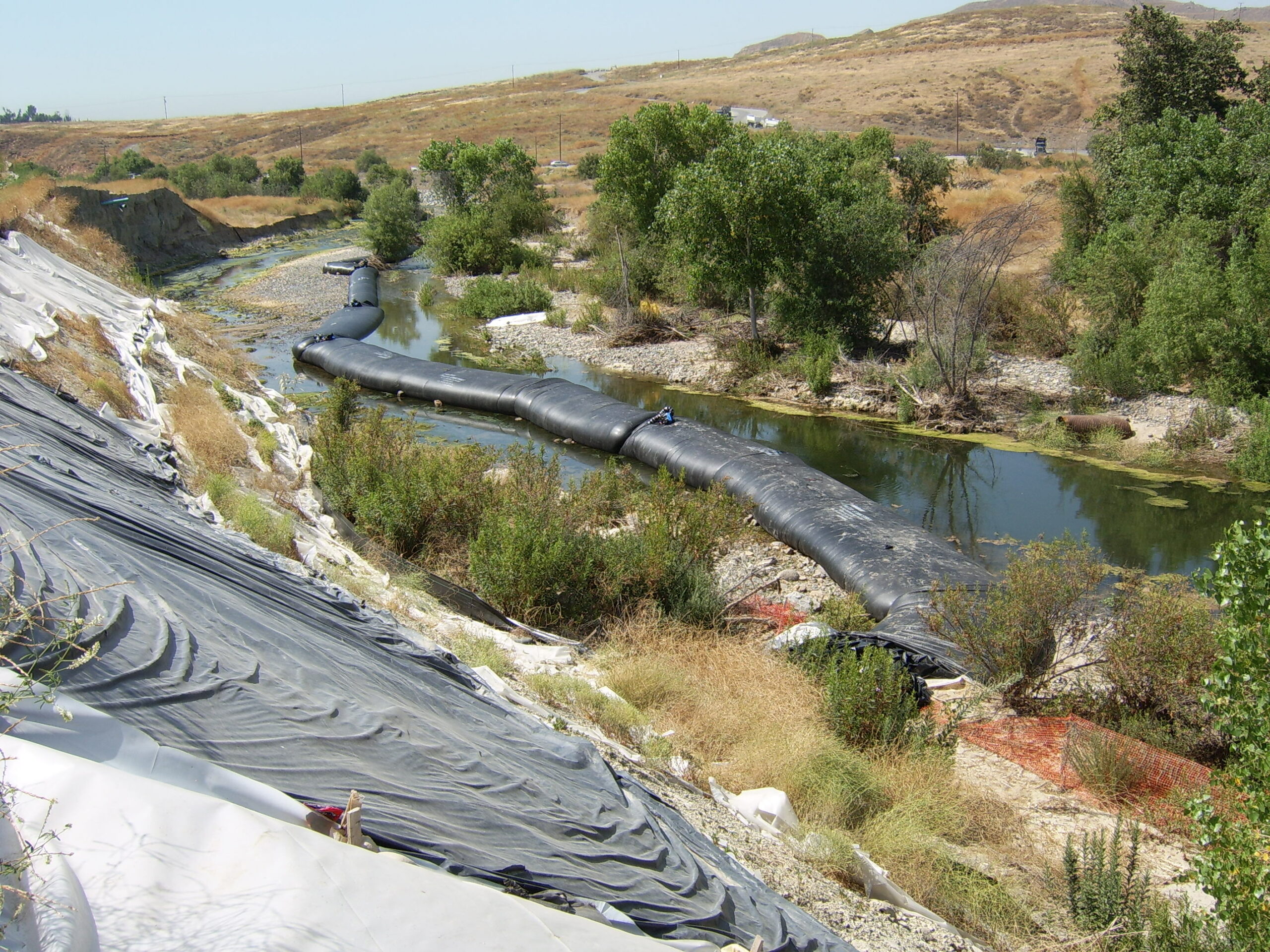
Taller AquaDams were used in the deeper hole, near where the first 4ft tall AquaDam was started.
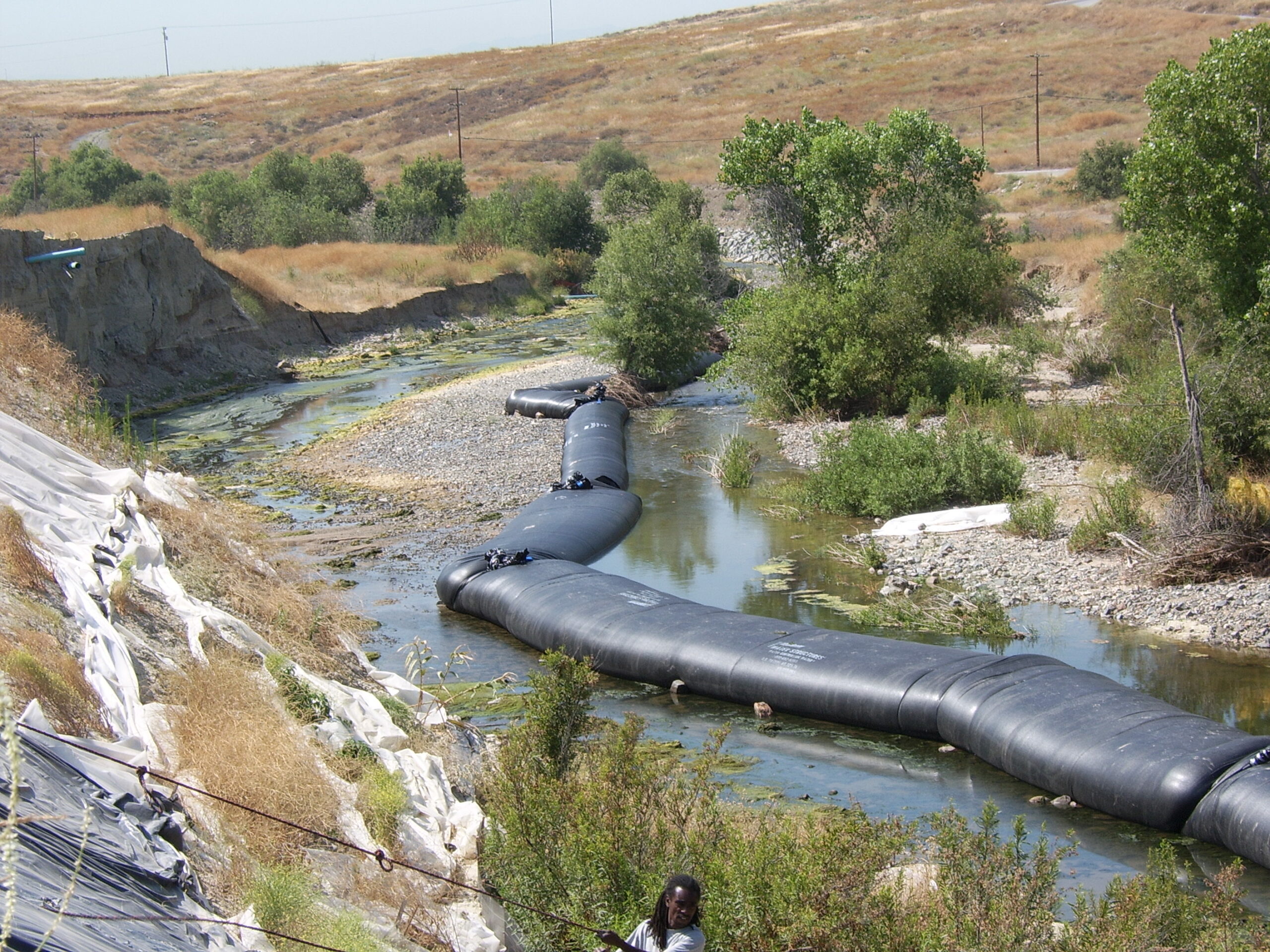
After exiting the deeper pools, shorter AquaDams were used to divert the flow of the river.
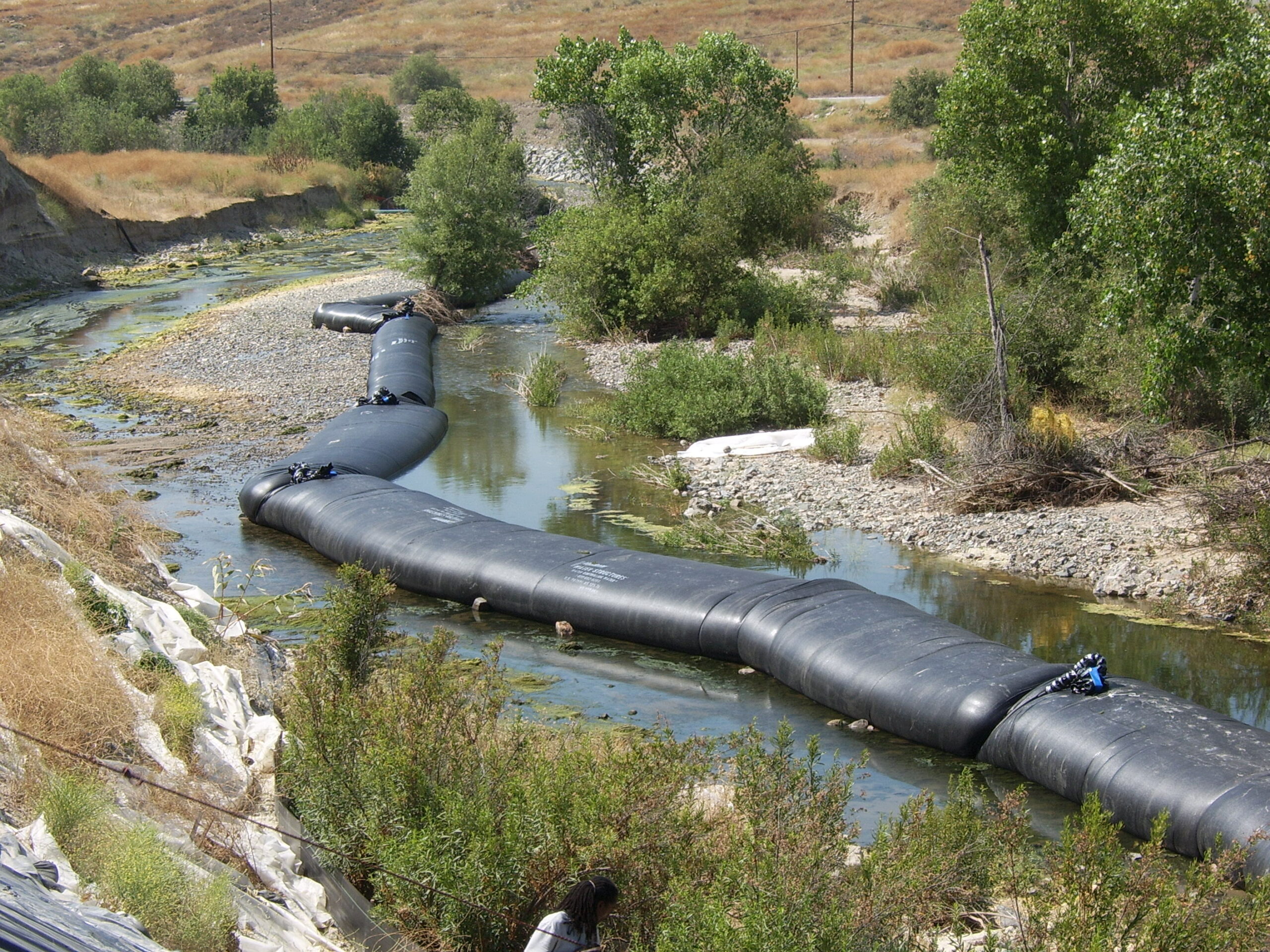
Great job AquaDam!
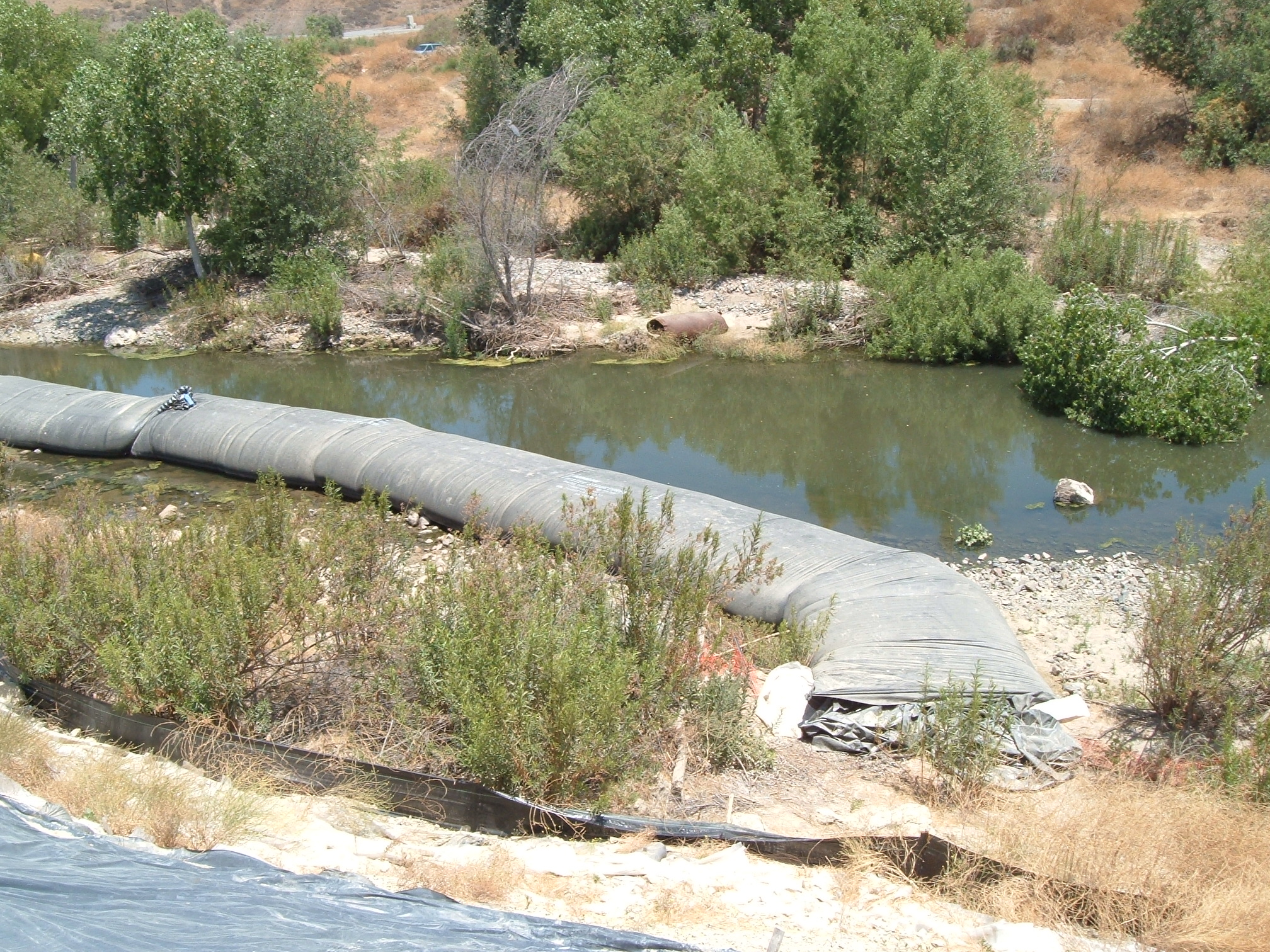
About two weeks later, we had to come back to replace a vandalized AquaDam.
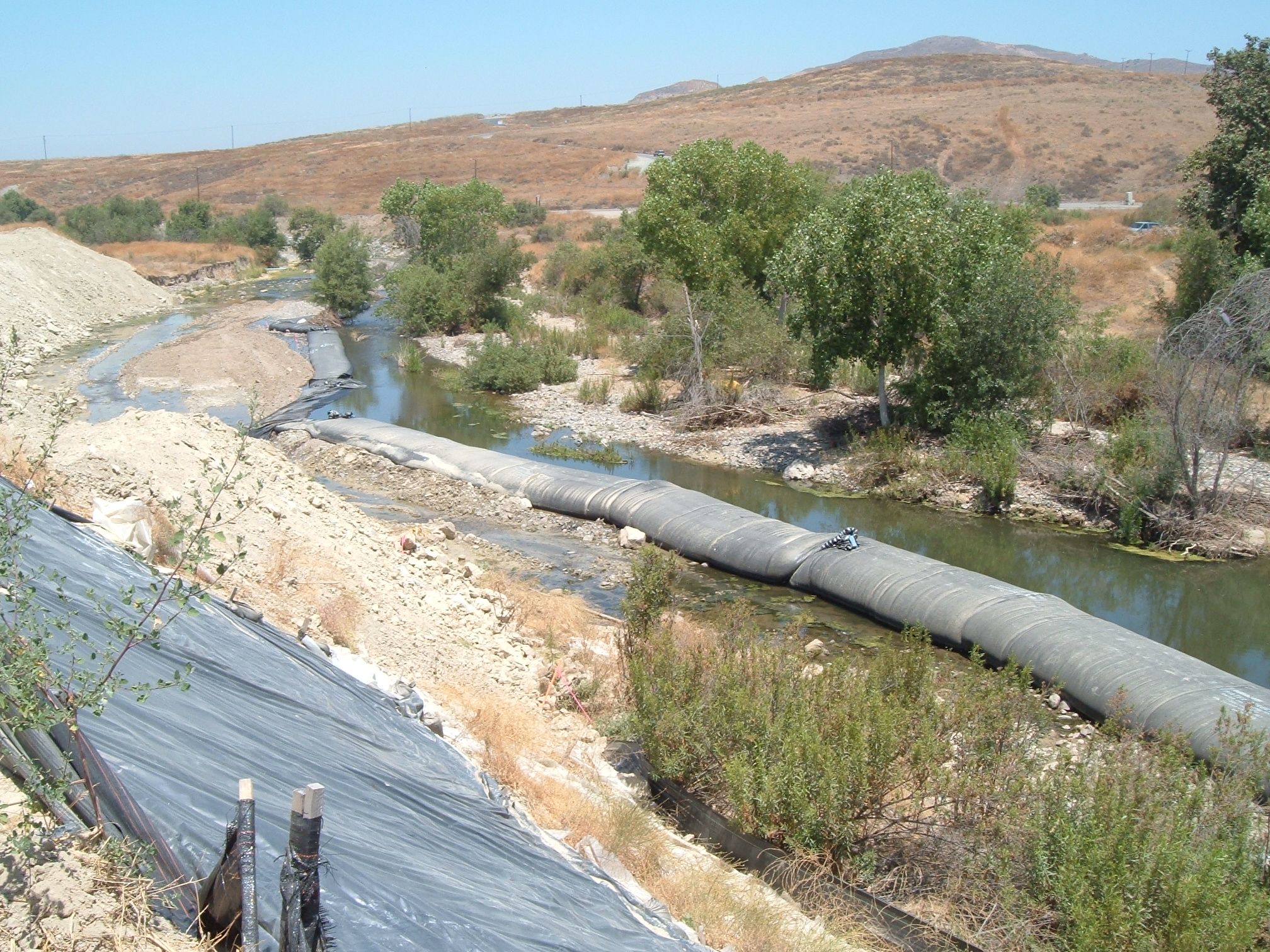
The vandalized AquaDam is clearly visible. Because of the uniqueness of an AquaDam, people are curious as to what's inside. Security is always a good idea for any job site.
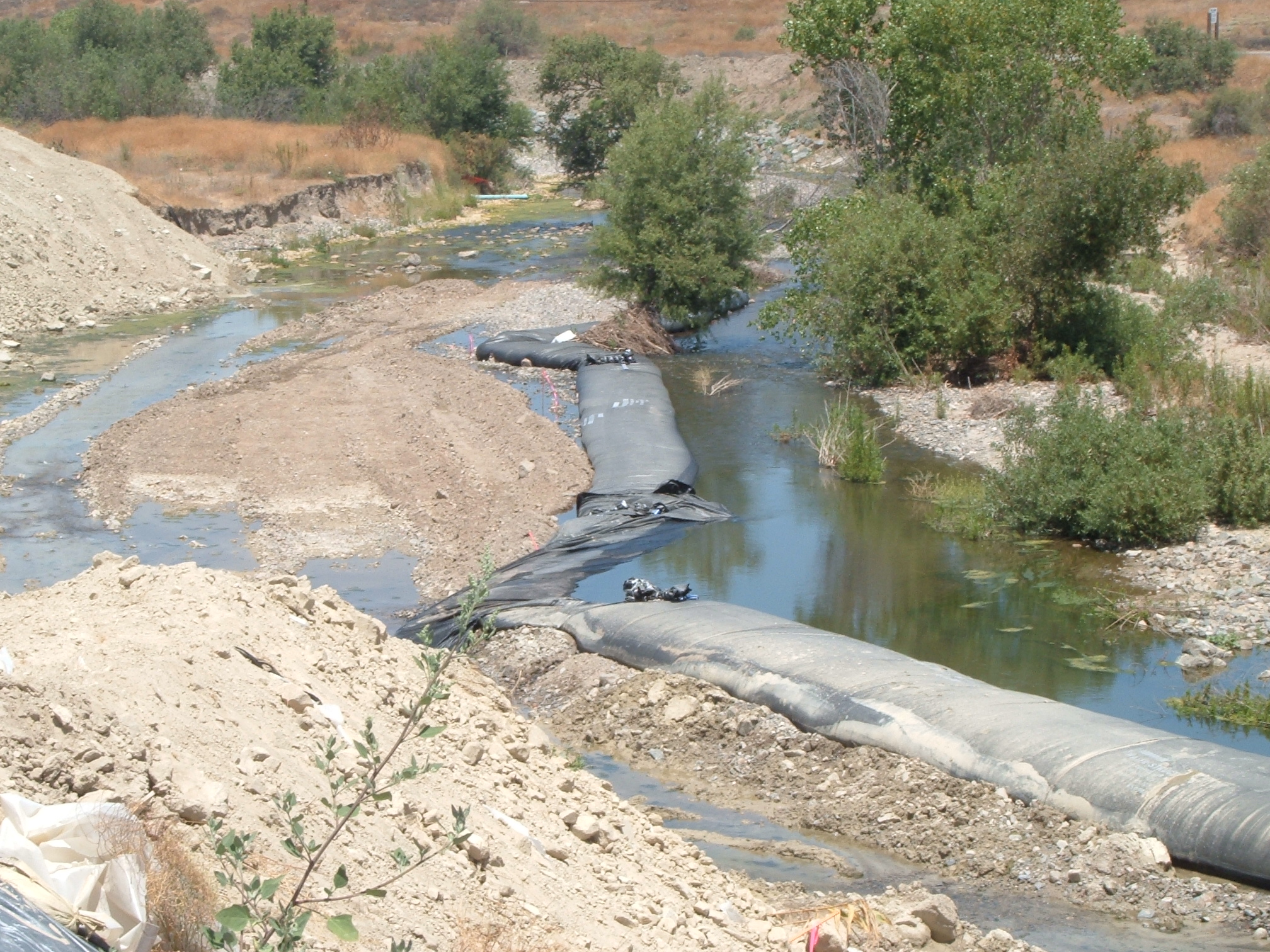
After the vandalized AquaDam drained a majority of the water inside, the AquaDams following it were drained too. This is because the vandalized AquaDam acted as a starting bank for the next AquaDam (downstream) and so on to the last one.
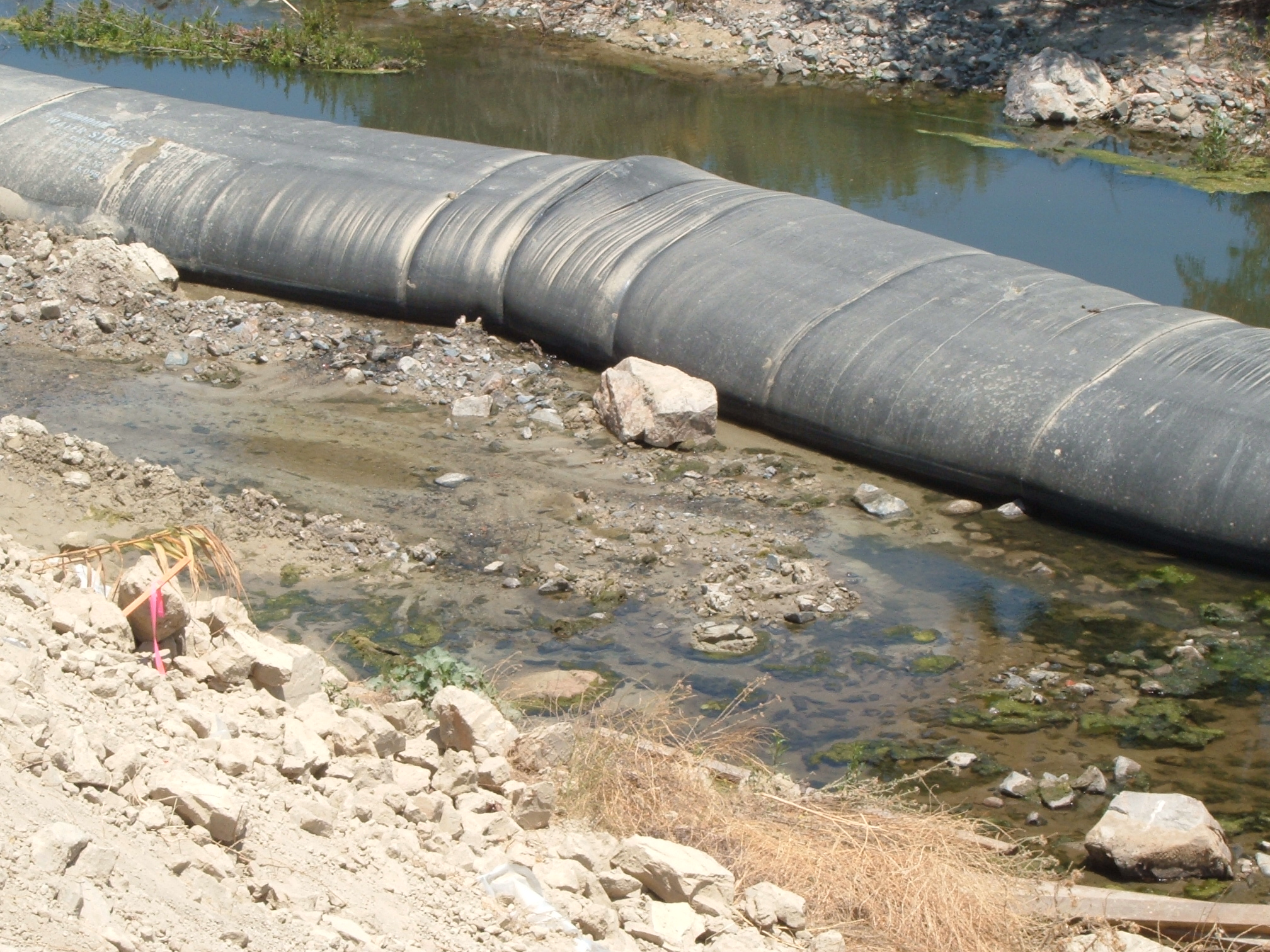
During installation, large rocks were moved out of the path of the AquaDam and set to the work area side of them. This served two purposes, one helping the AquaDam to seal to the stream bed and the other to provide extra support along the "dry" side of the AquaDam This technique helps prevent the AquaDam from leaning due to uneven pressures on either sides.
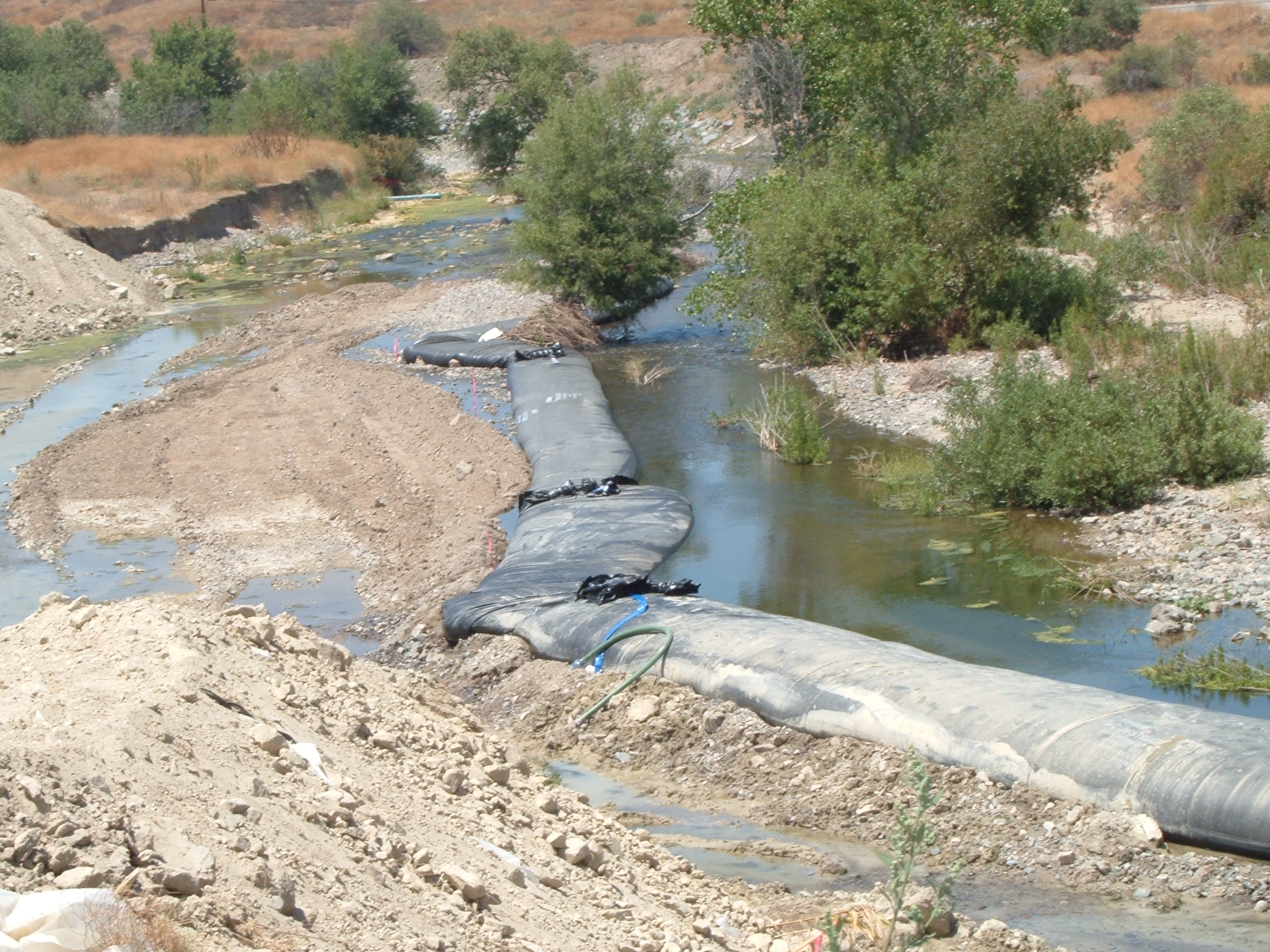
The vandalized AquaDam has been removed and a replacement AquaDam has been installed.
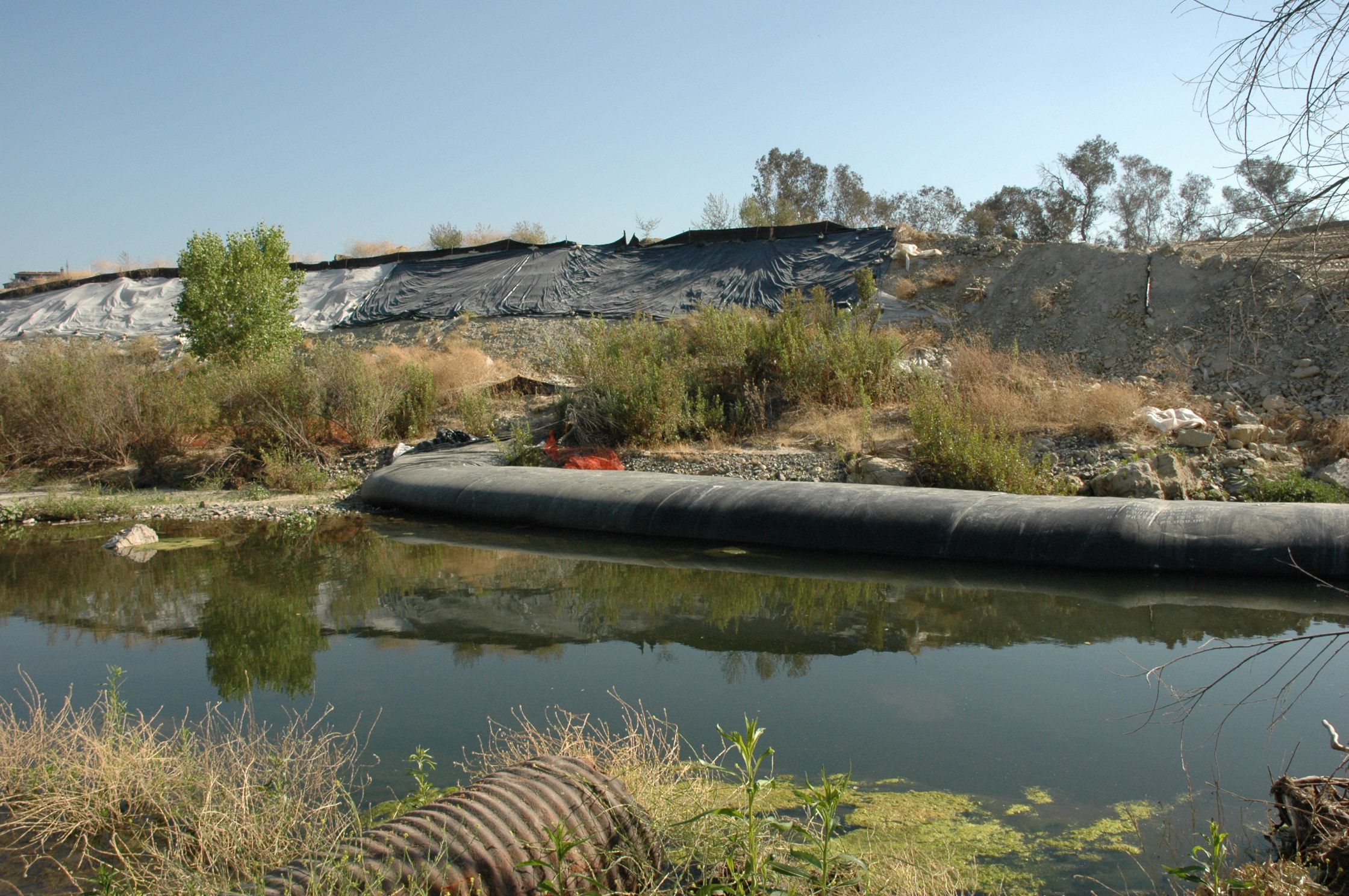
The start of the AquaDam cofferdam system, from the other side of the river.
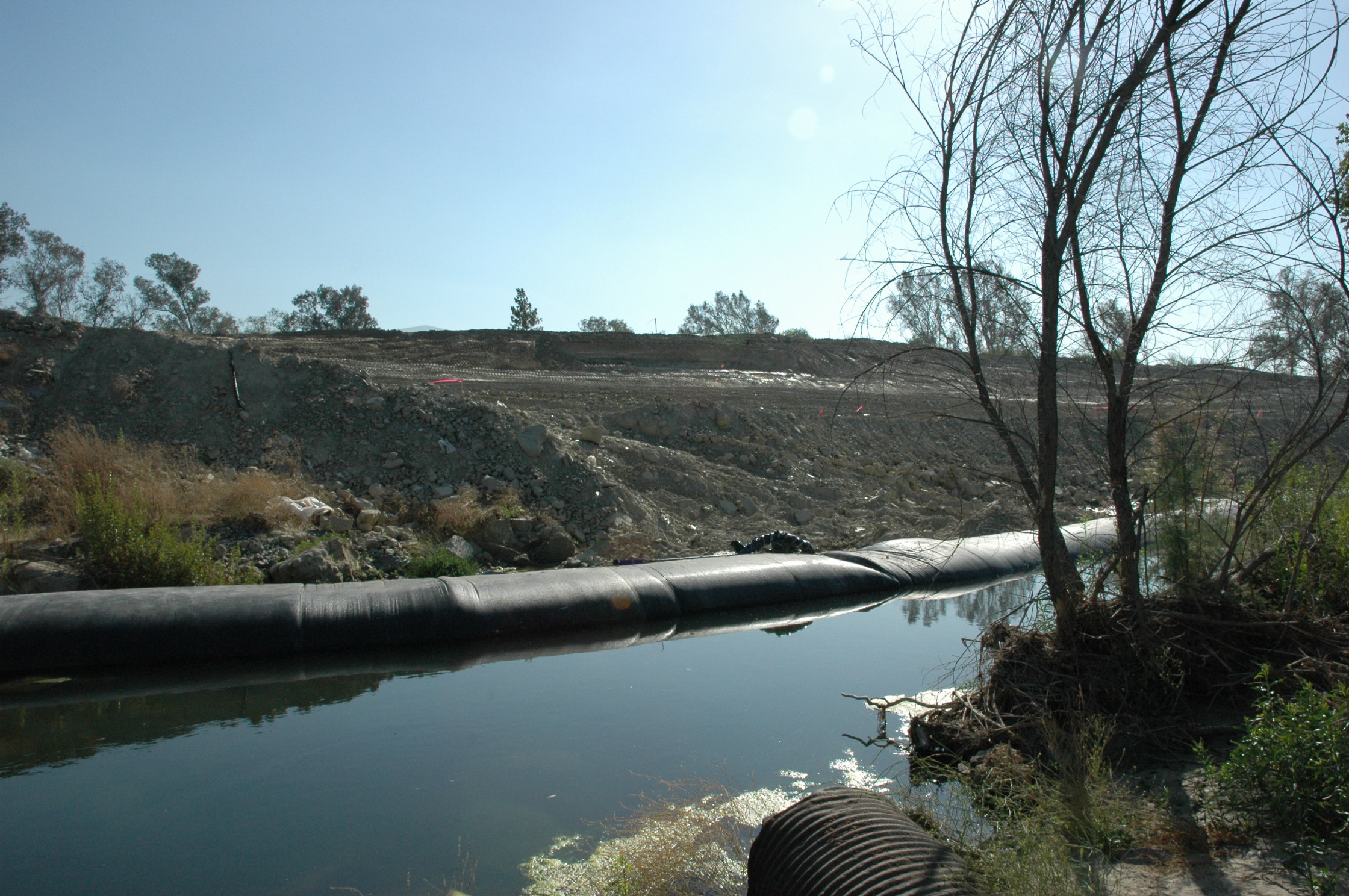
Here is the connection of the first two 4ft tall AquaDams.
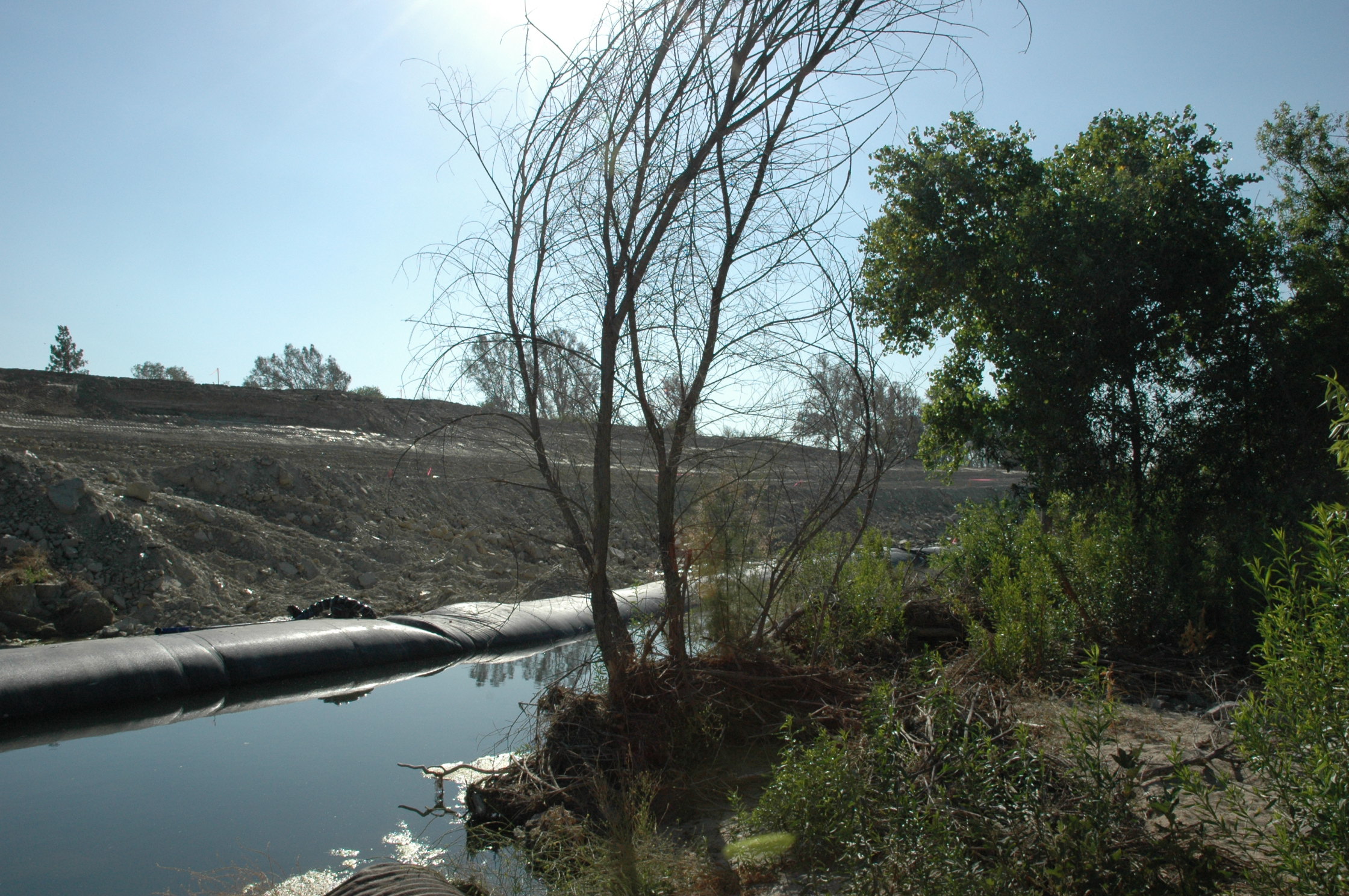
Most of the eroded bank has been cut down and back, compared to when the AquaDams were first installed.
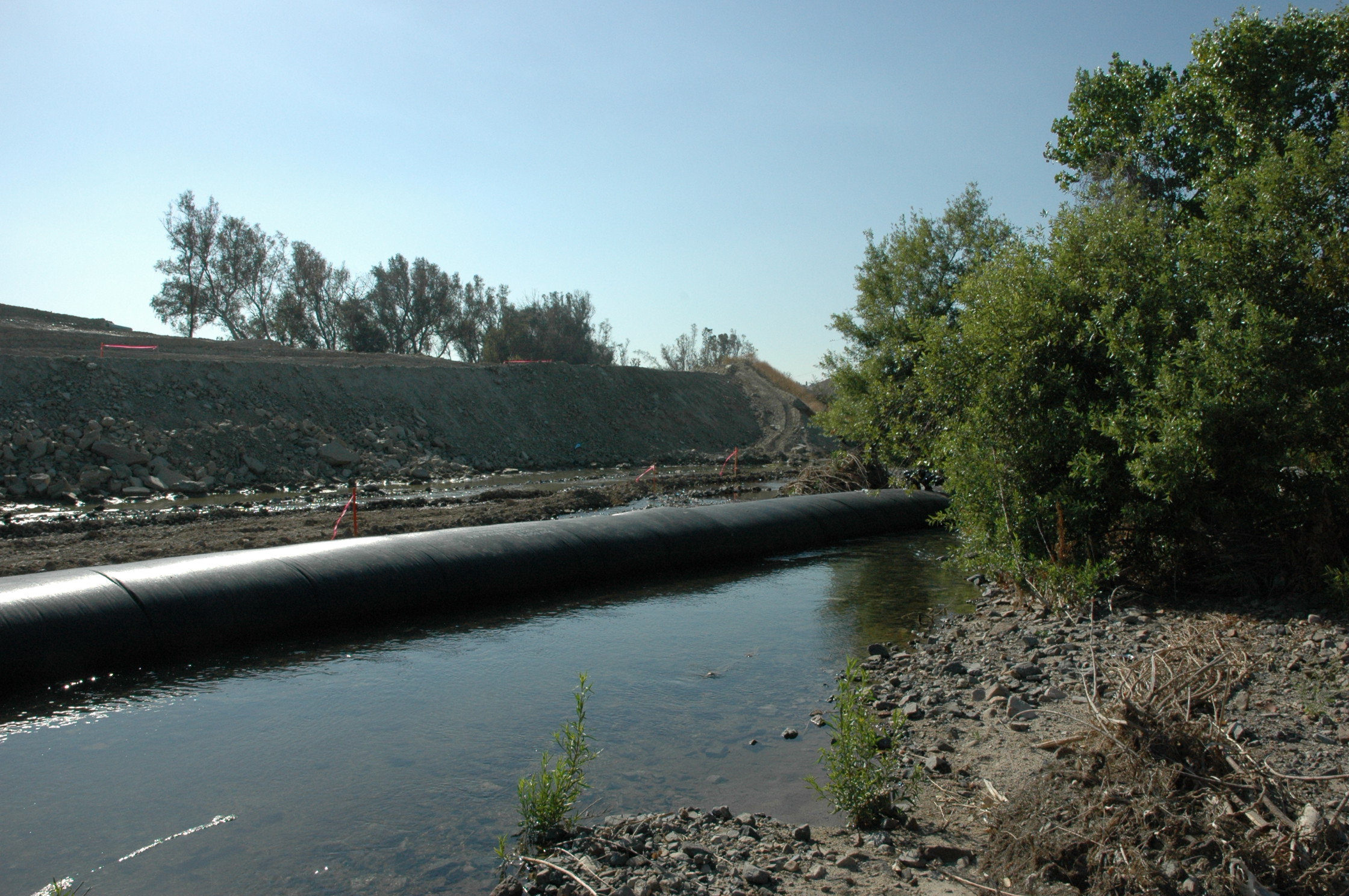
The AquaDam cofferdam system is keeping the river's water out of the work area, just as intended.
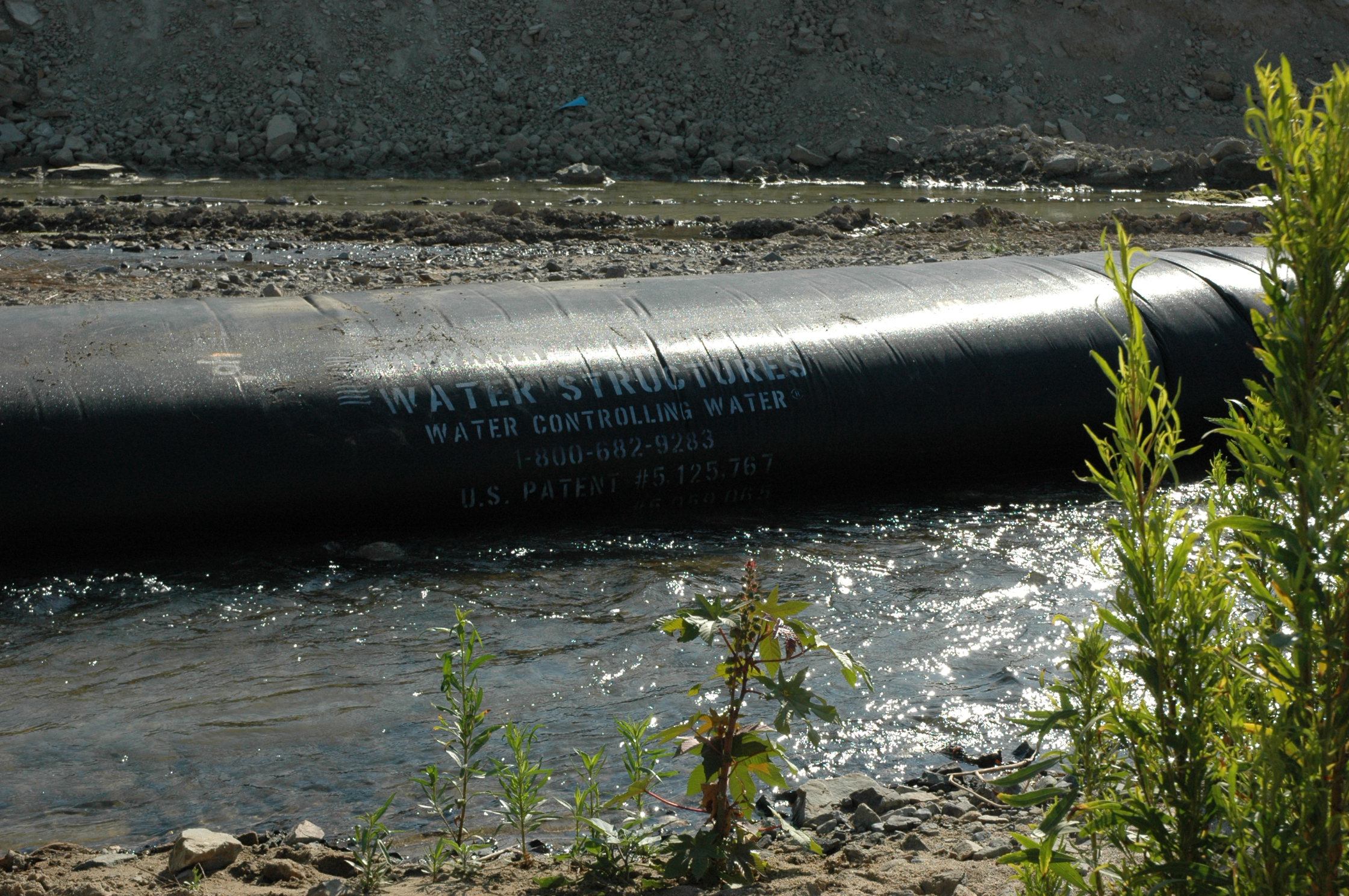
AquaDams work great at "Water Controlling Water"!
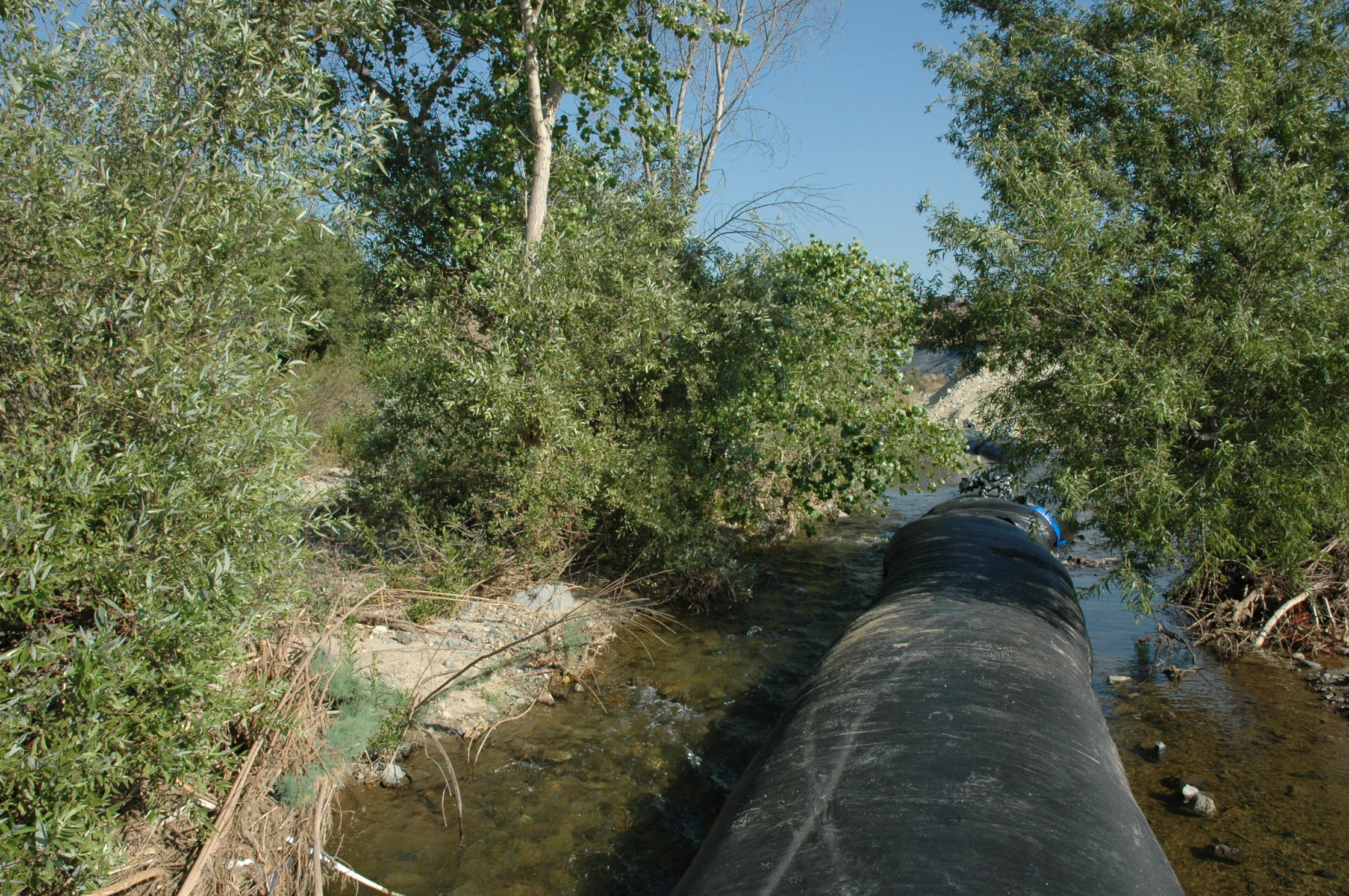
The two 3ft tall AquaDams were slightly moved from their original locations.
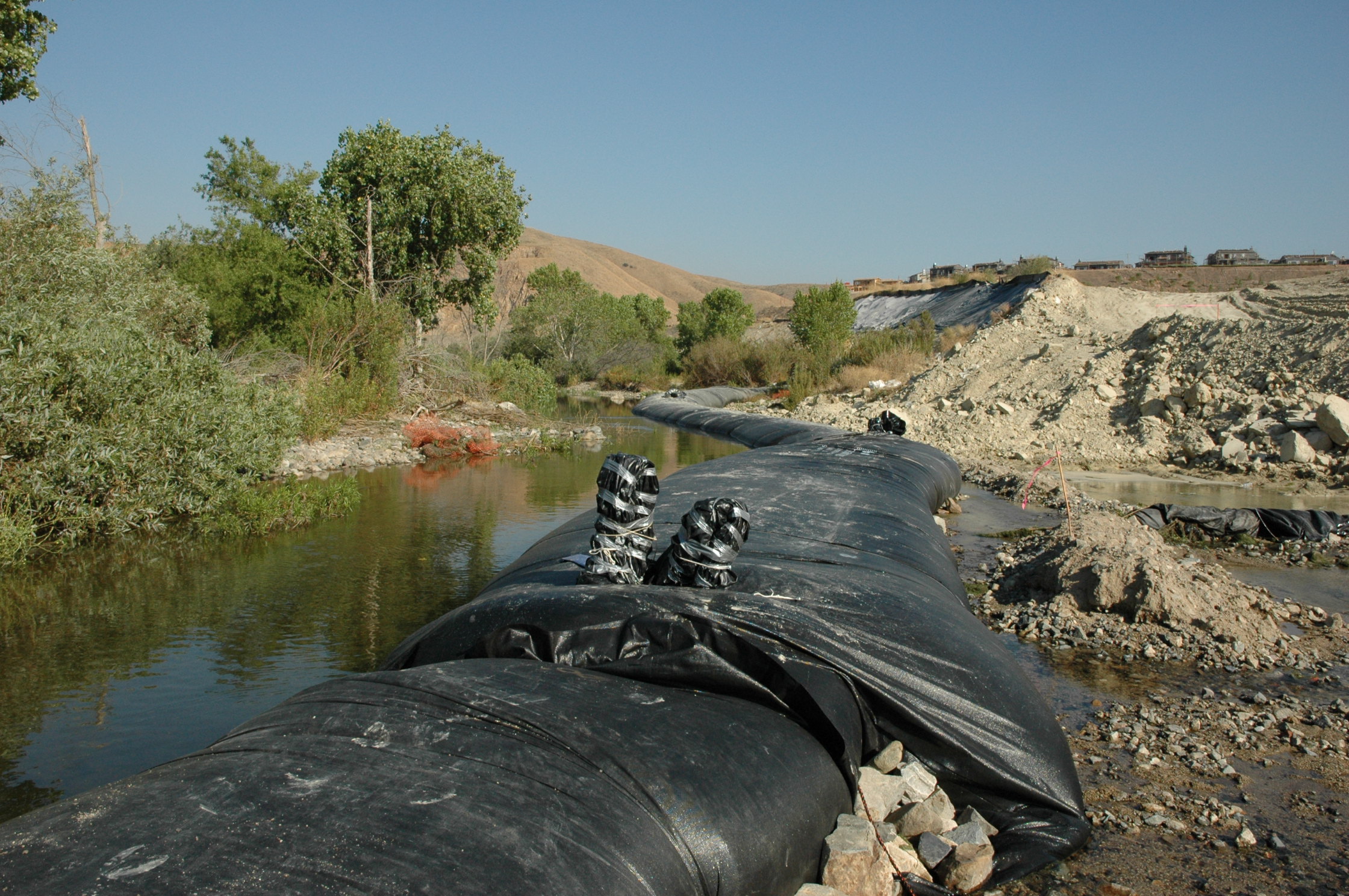
Here we can see the fill-tubes of the first 3ft tall AquaDam.
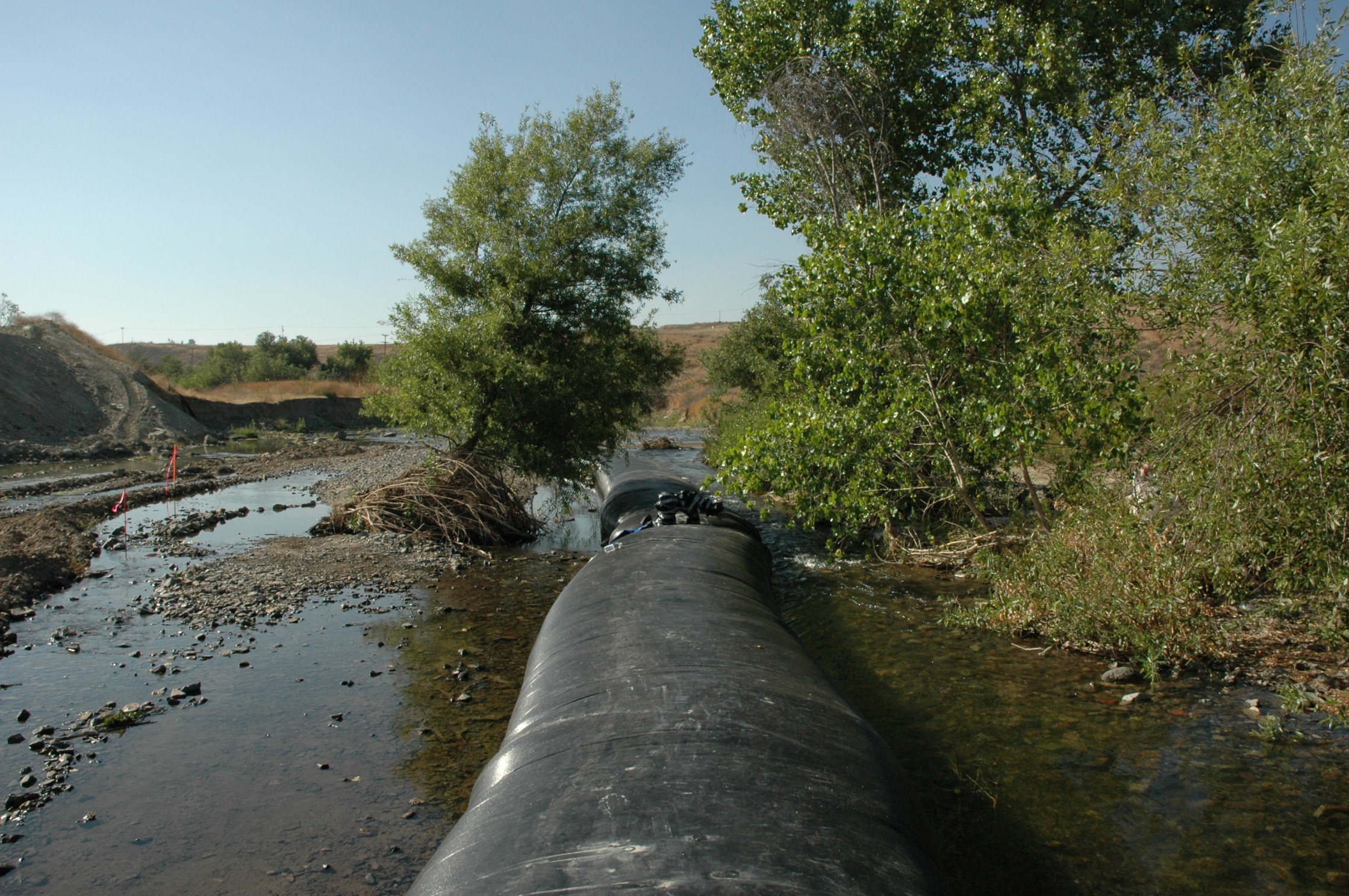
During the first deployment the two 3ft tall AquaDams went around the tree that is to the left of the AquaDams.
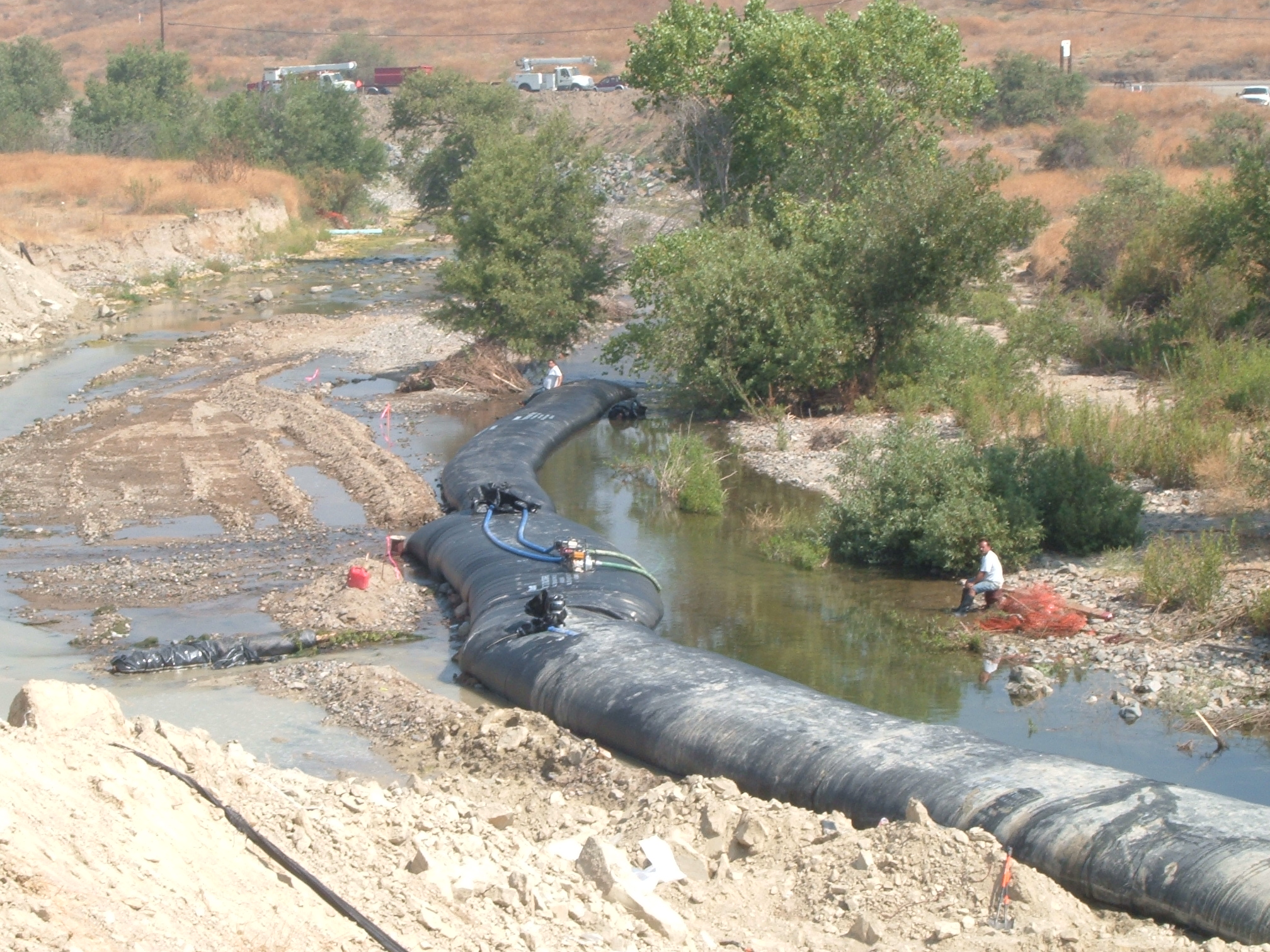
The first 3ft tall AquaDam has been re-deployed and is being filled with water.
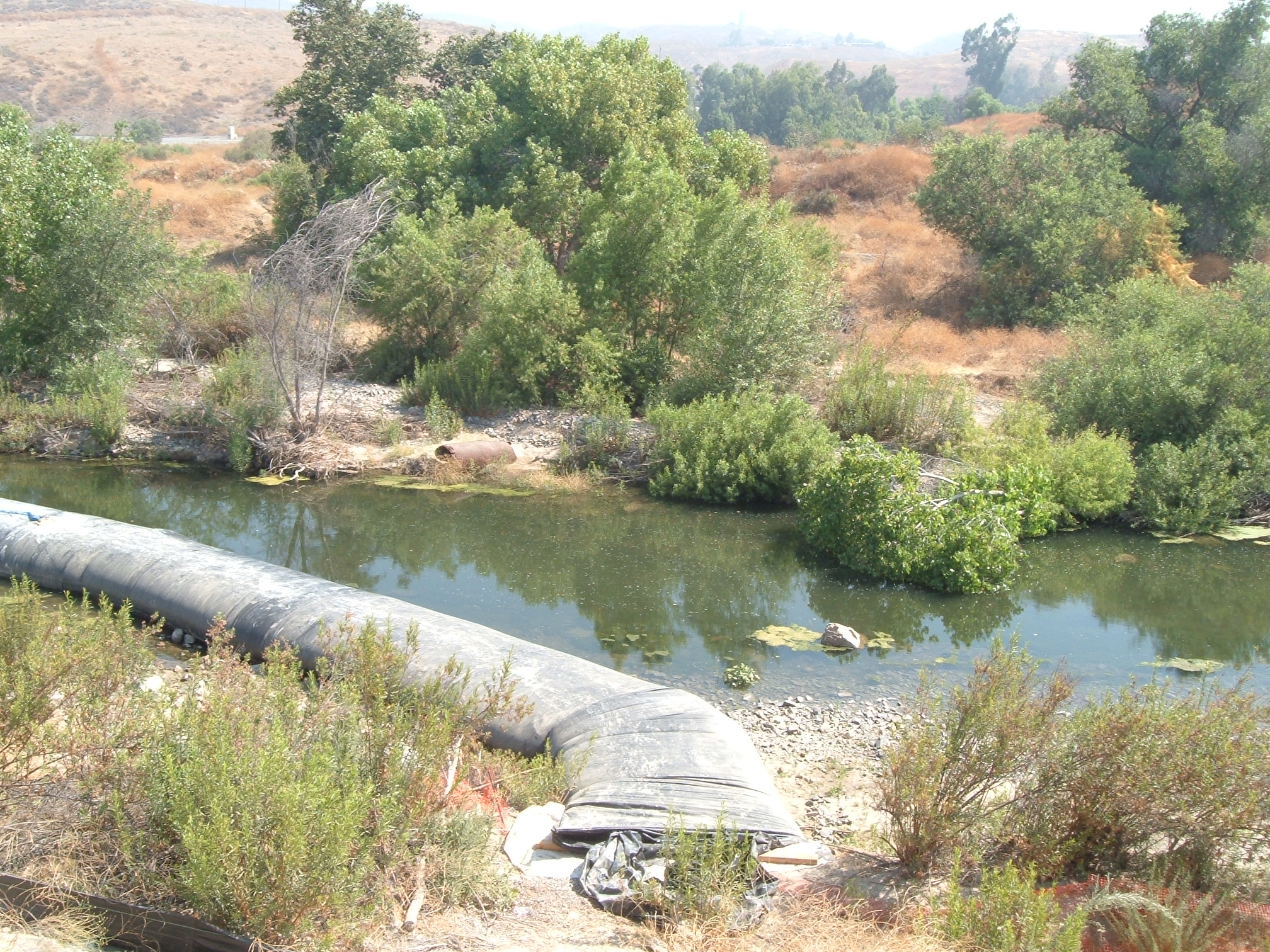
The first two 4ft tall AquaDams are still doing great.
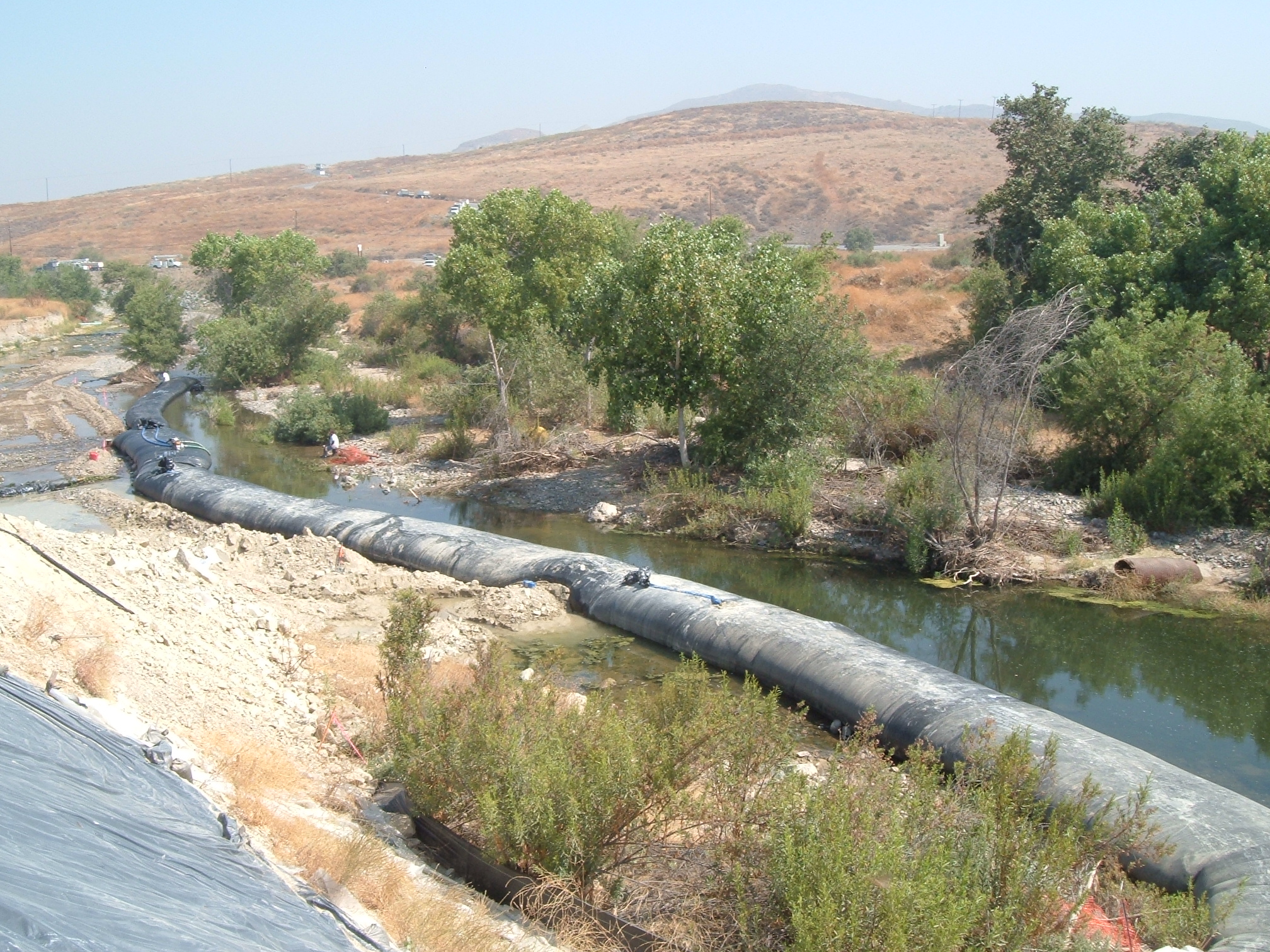
Non-abrasive fill material (or a double closed end AquaDam) can also be used to help support the work area side of an AquaDam.
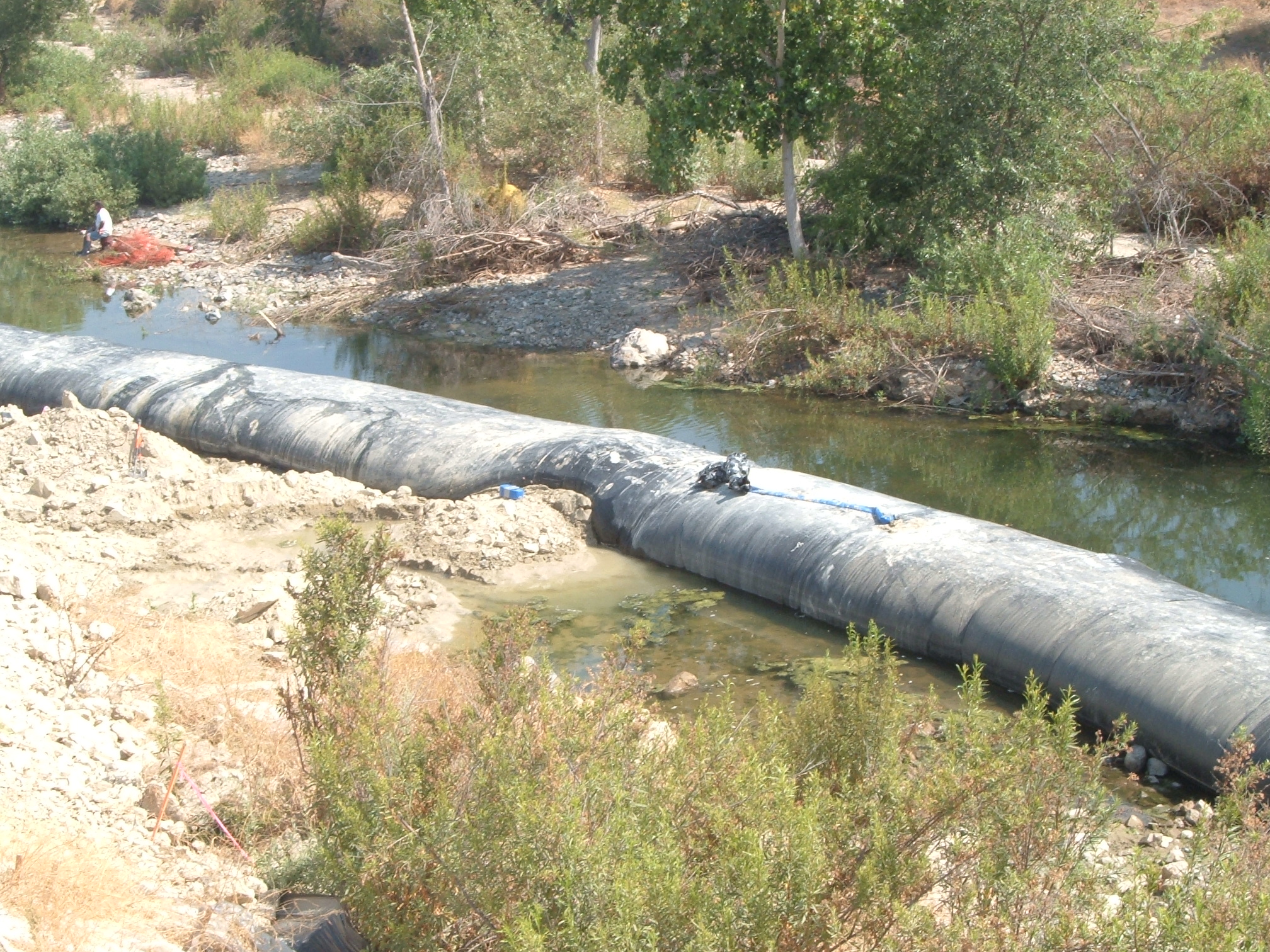
Here is a closer photo of non-abrasive fill material was used to support the AquaDam. Helping to brace it against the forces of the water being diverted.
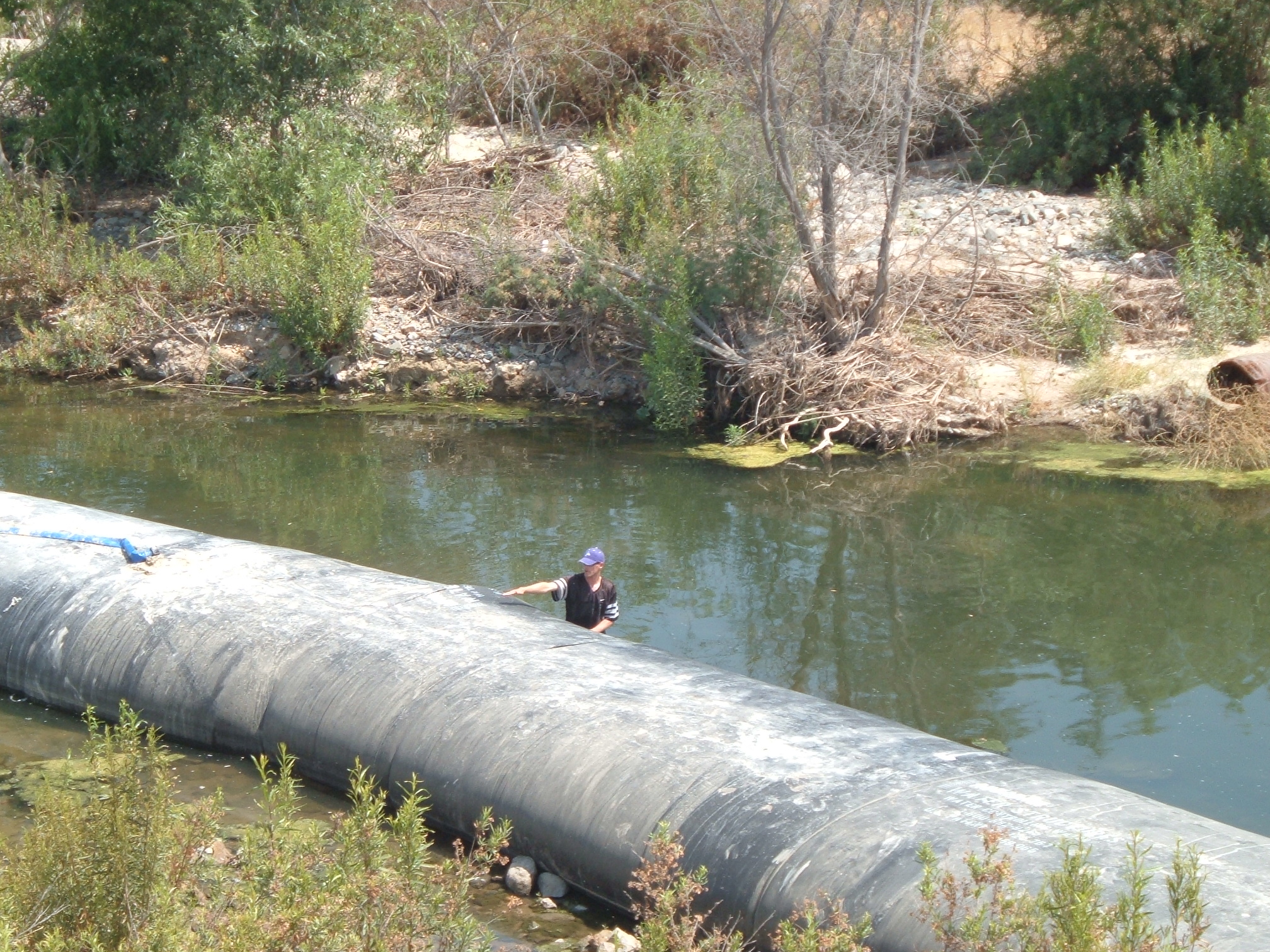
The AquaDam in relation to a 6ft tall man.
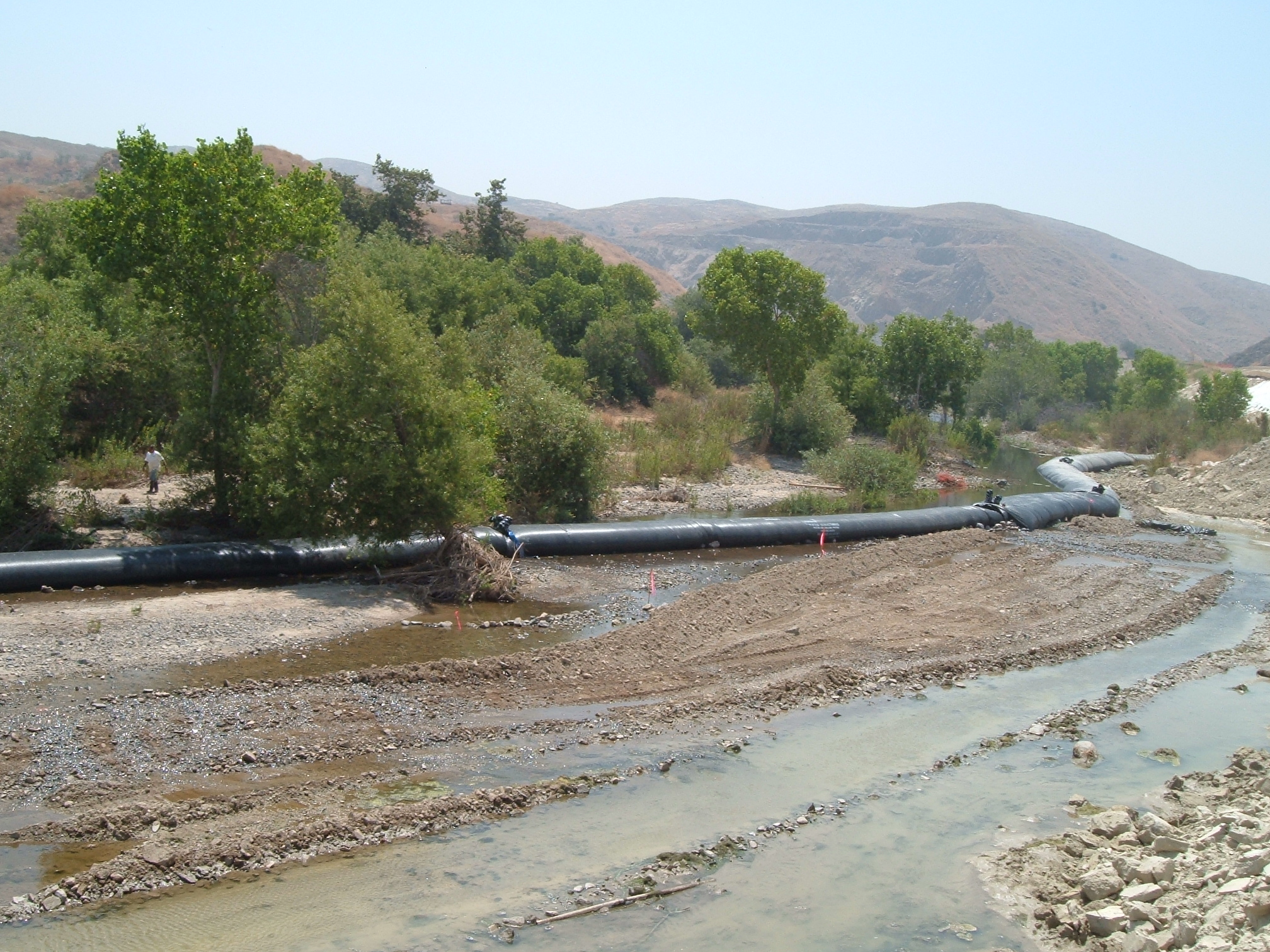
A photo looking upstream, from the work area.
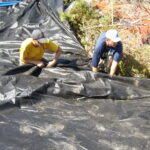
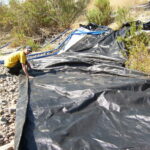
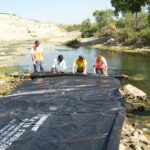
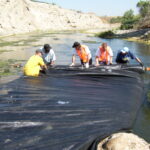
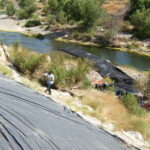
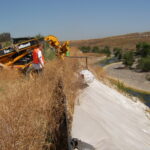
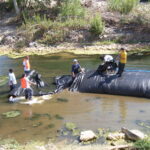
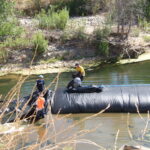
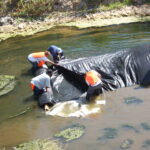
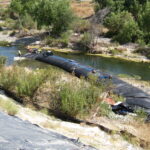
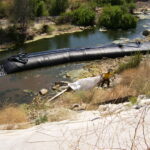
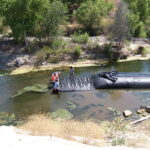
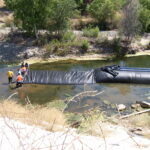
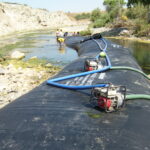
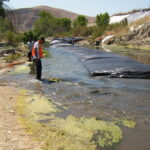
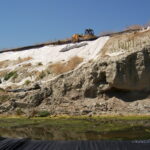
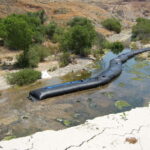
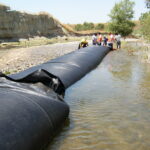
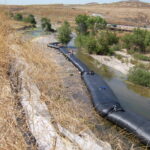
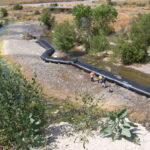
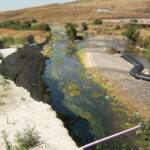
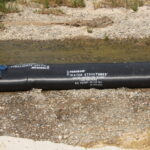
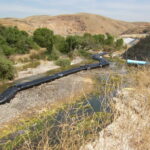
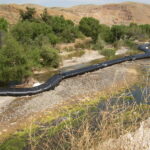
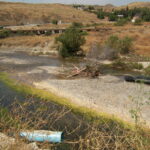
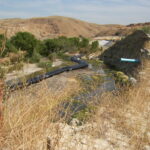
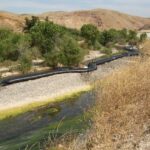
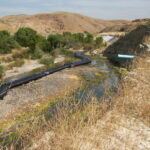
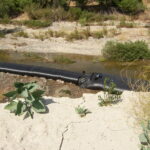
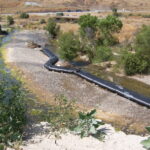
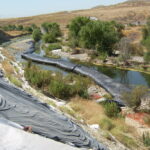
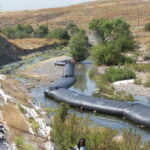
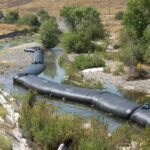
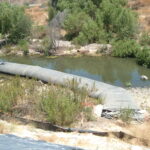
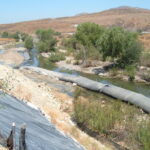
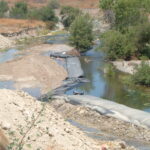
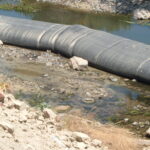
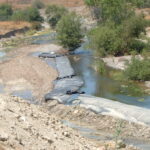
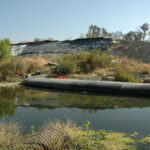
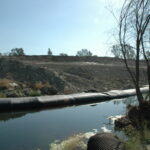
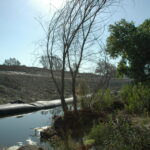
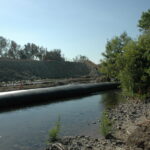
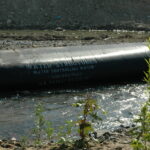
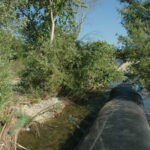
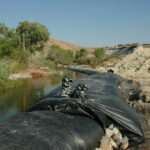
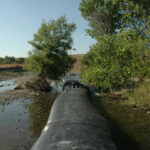
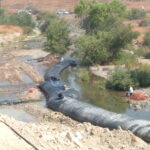
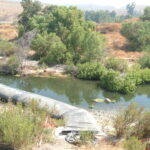
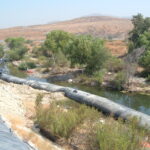
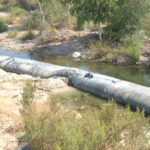
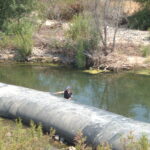
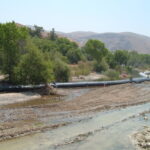
3ft, 4ft, and 5ft tall AquaDams used, River Diversion, Bank Isolation, Road Bank Repair
